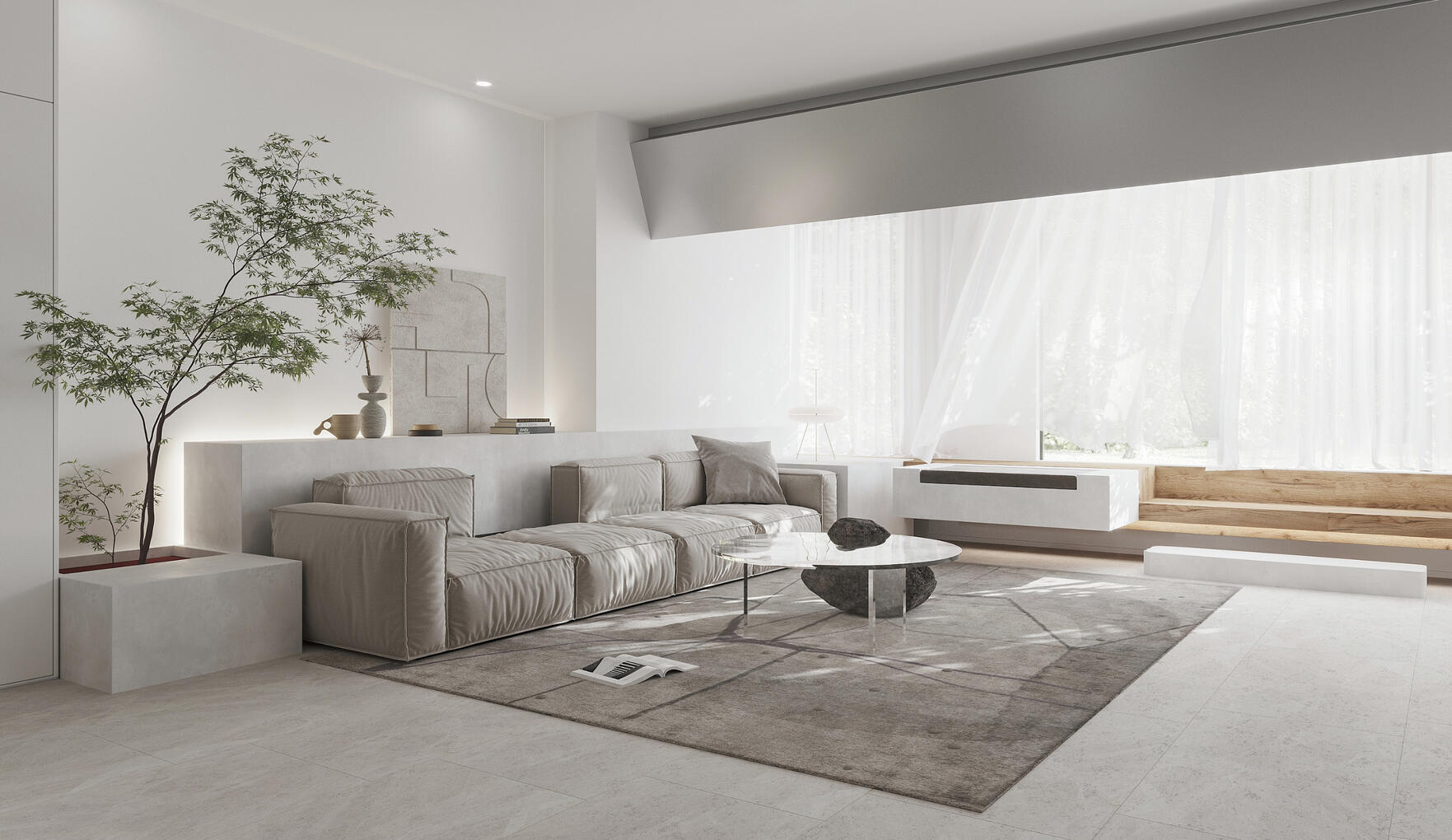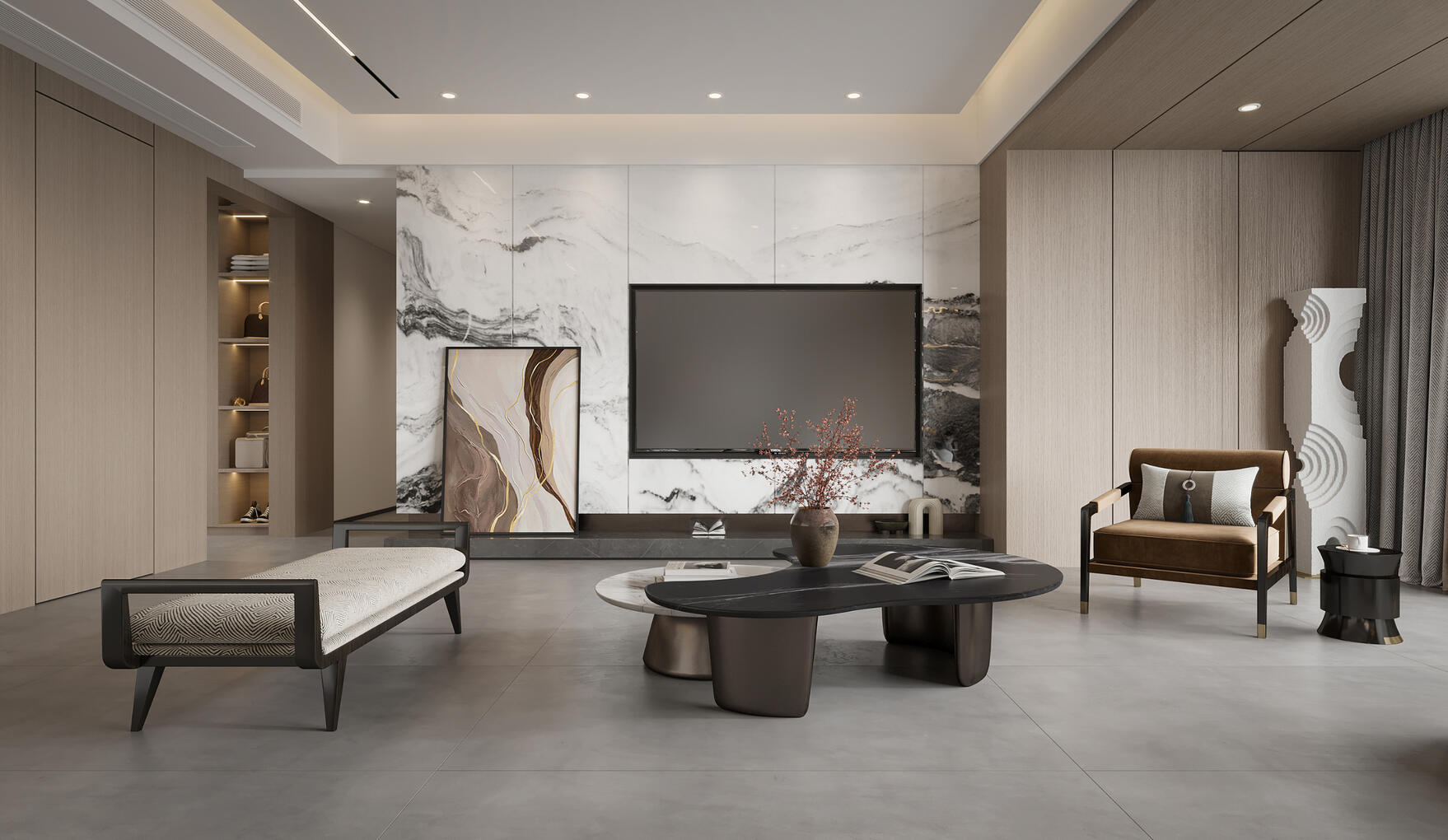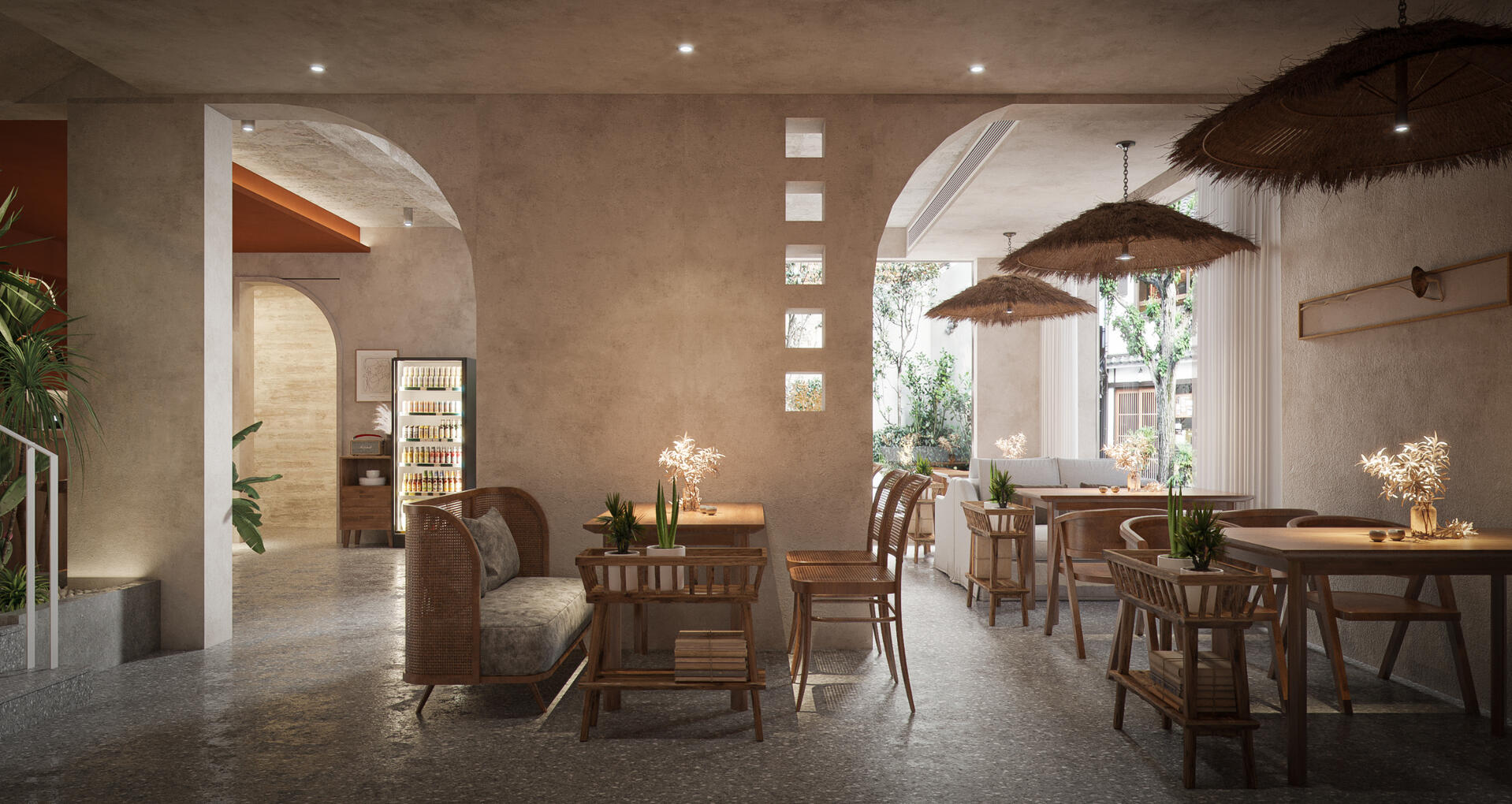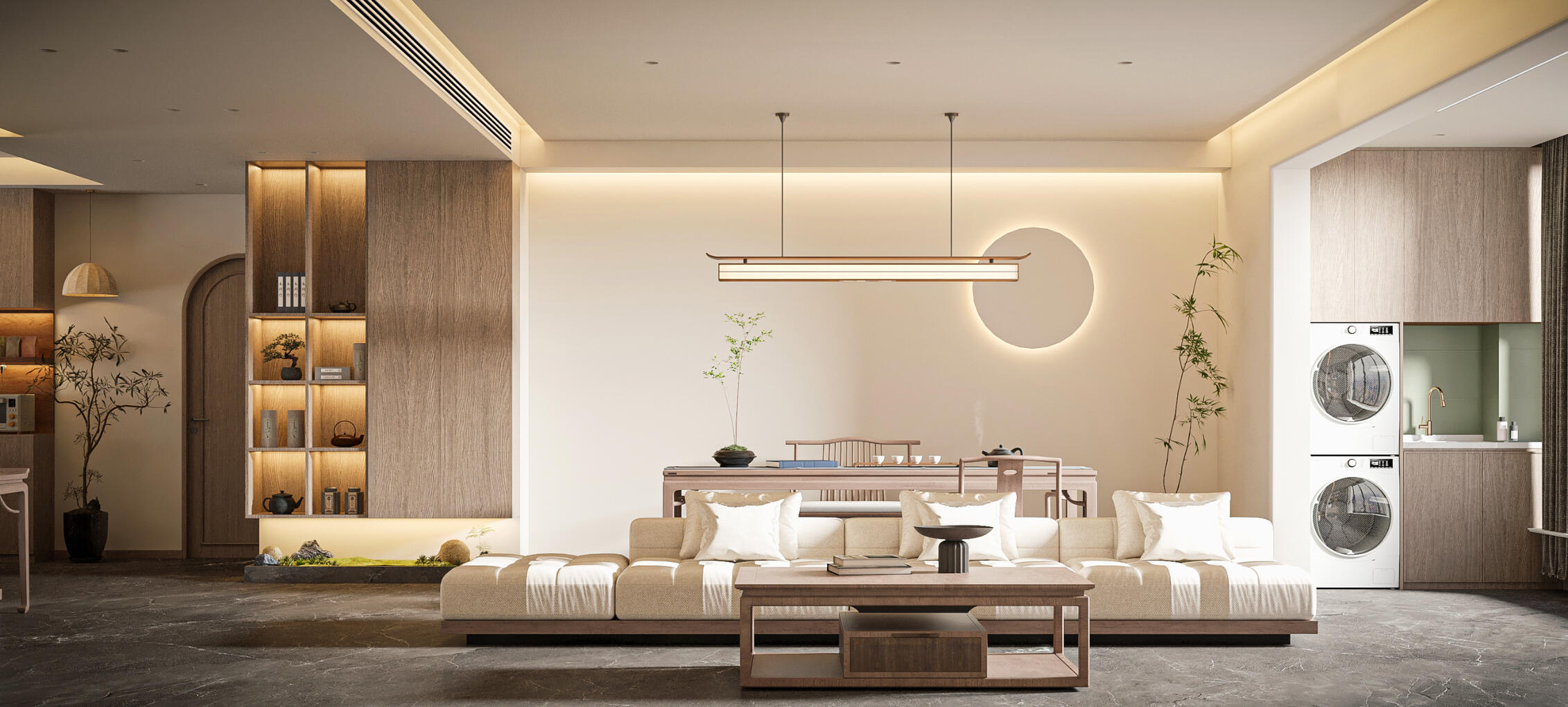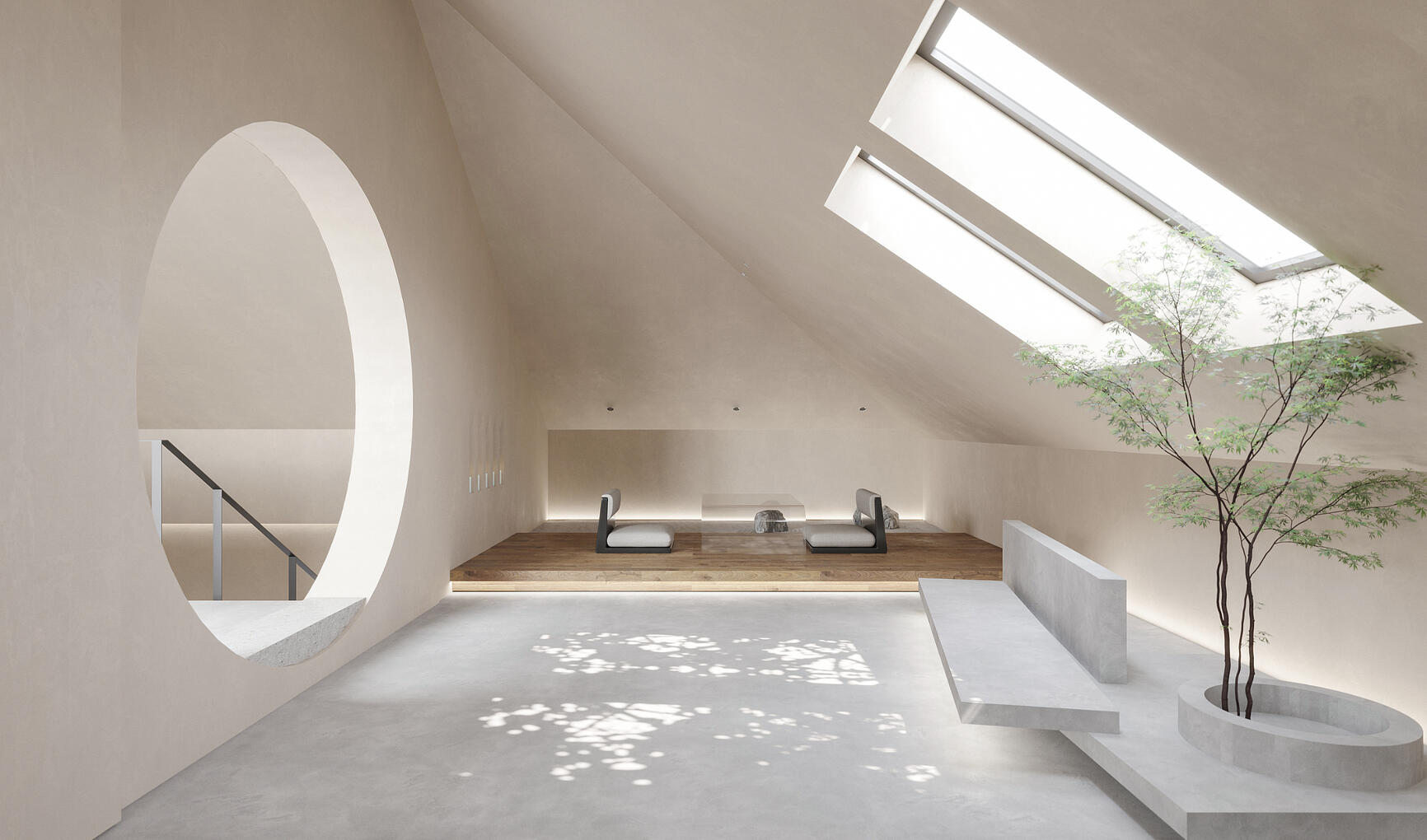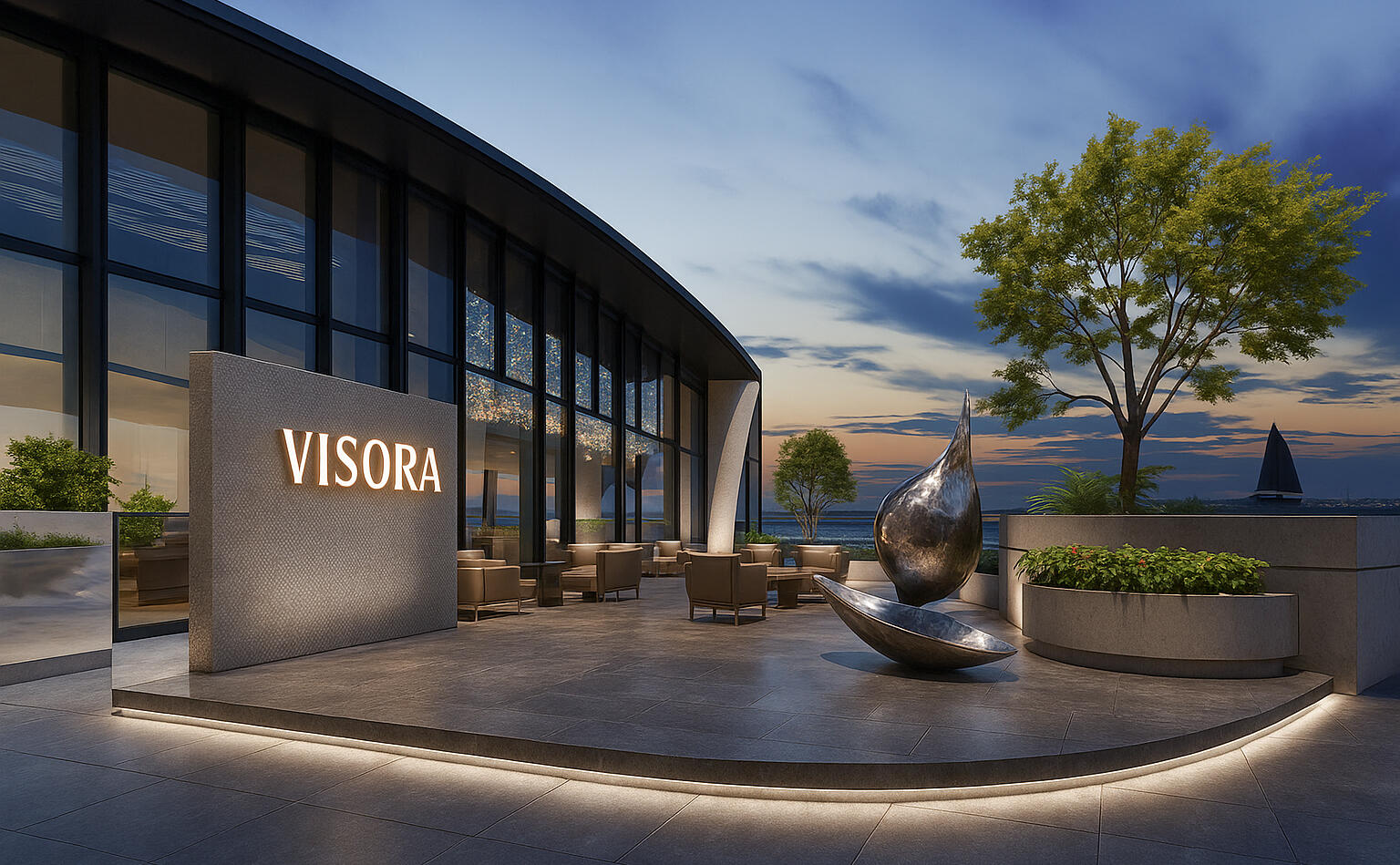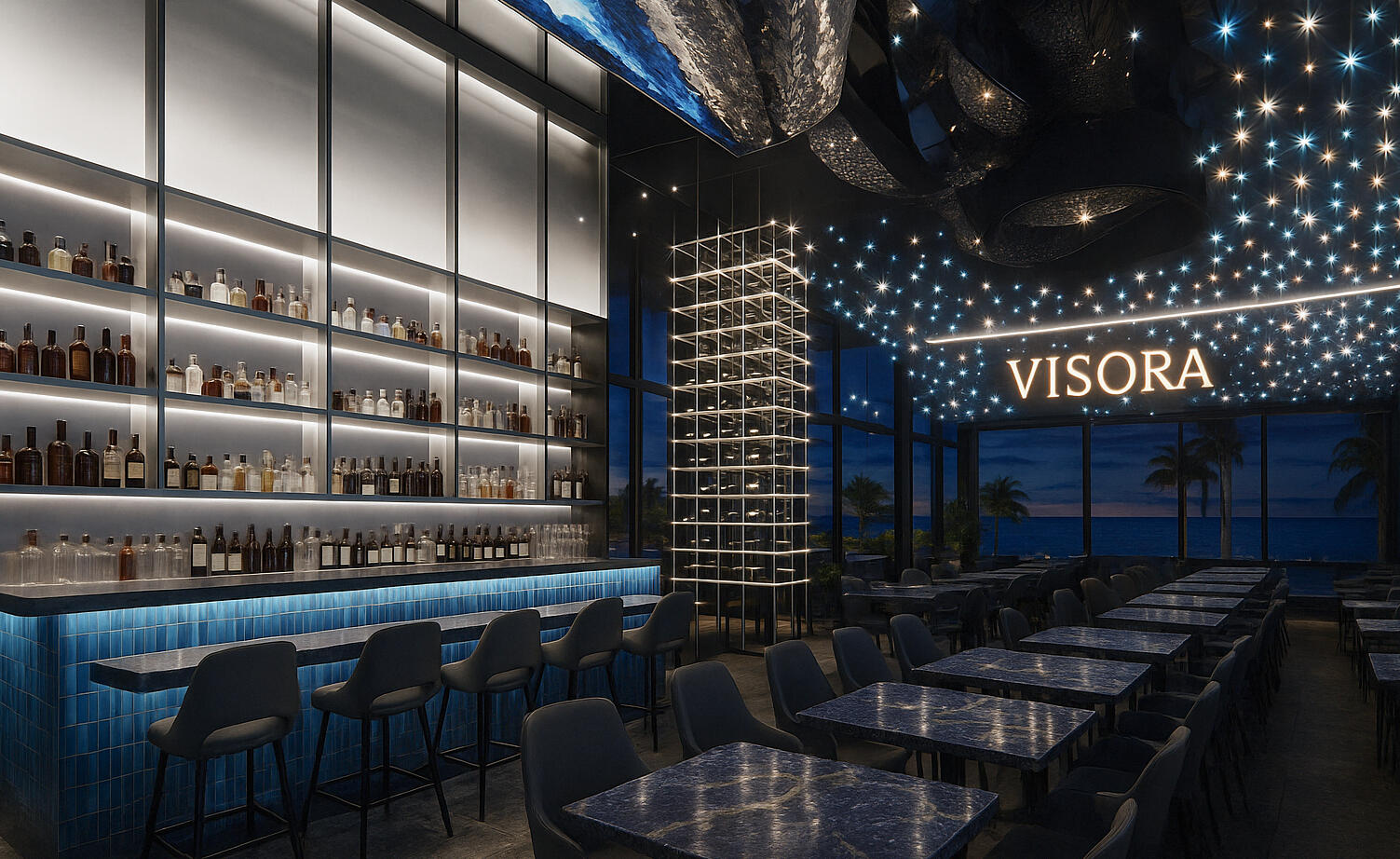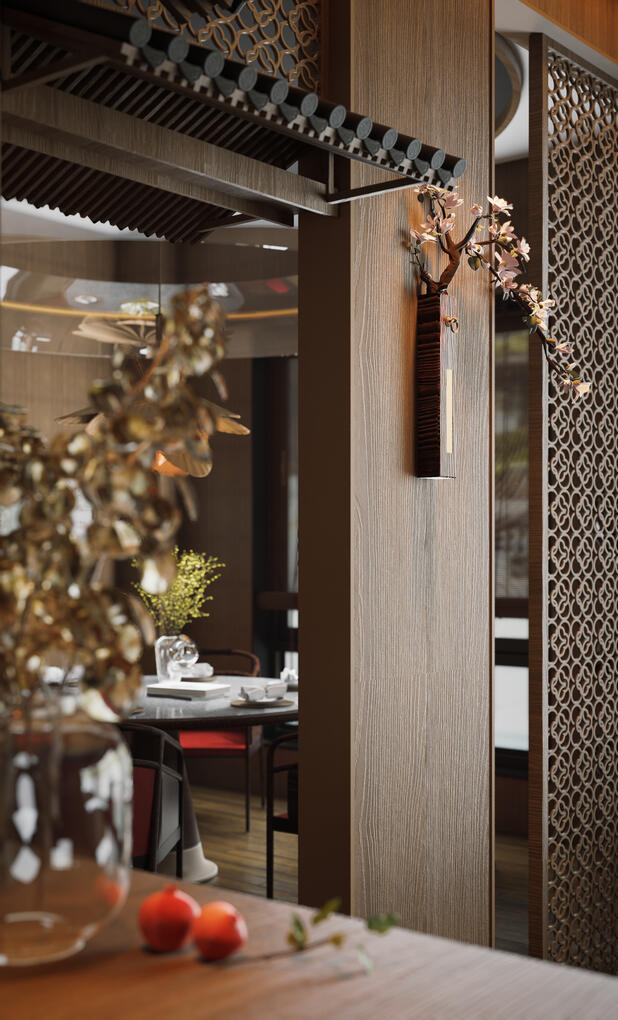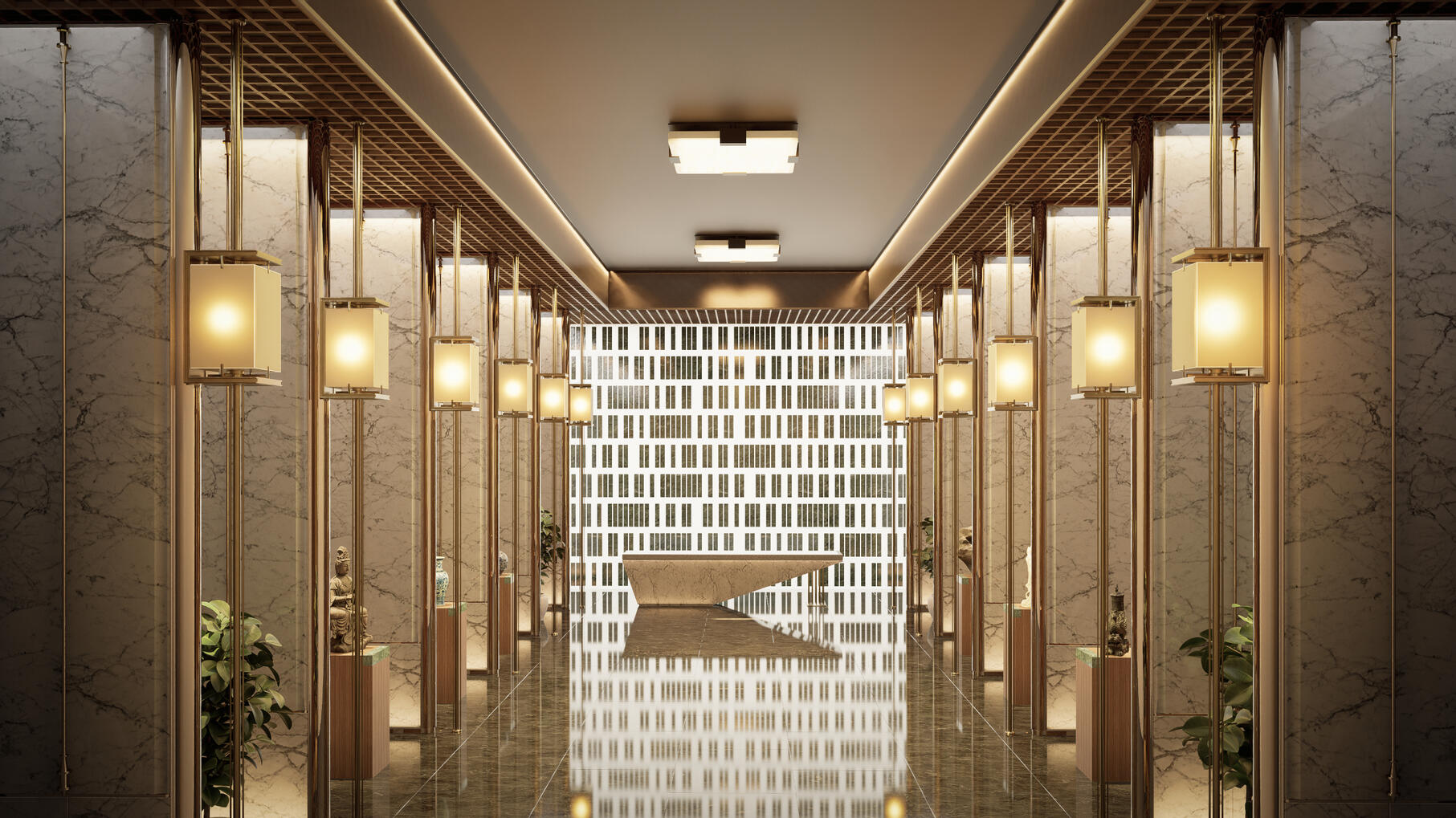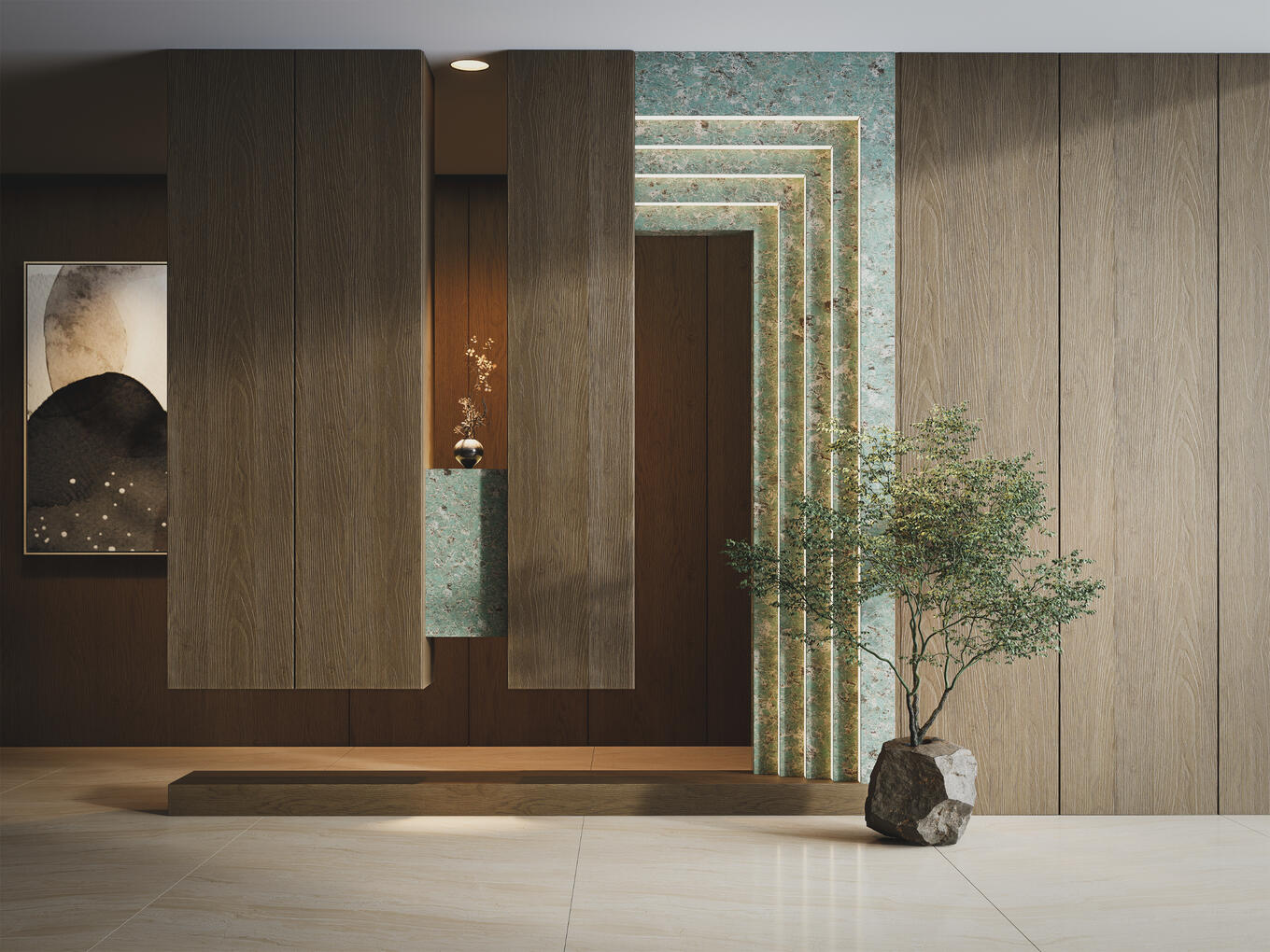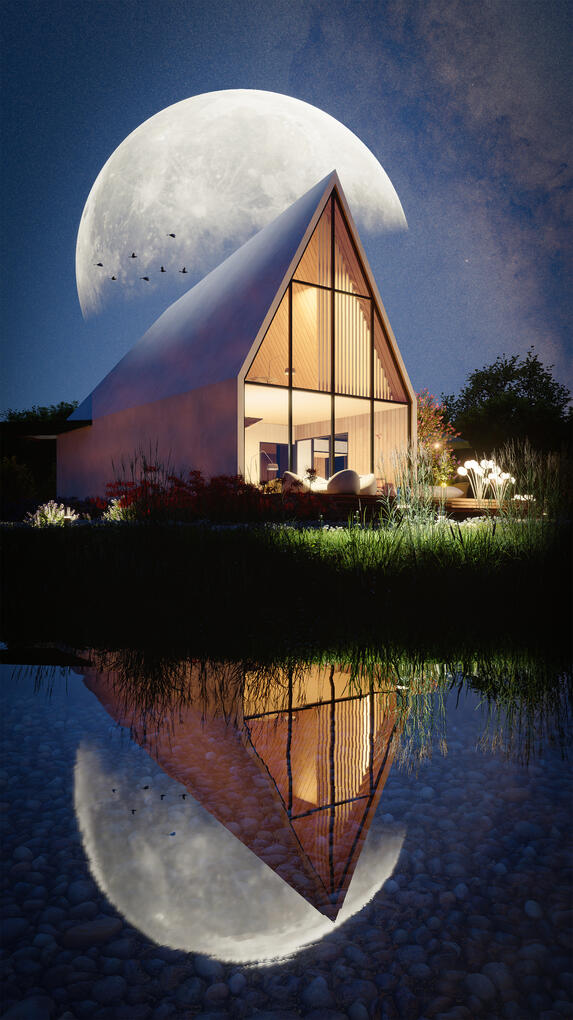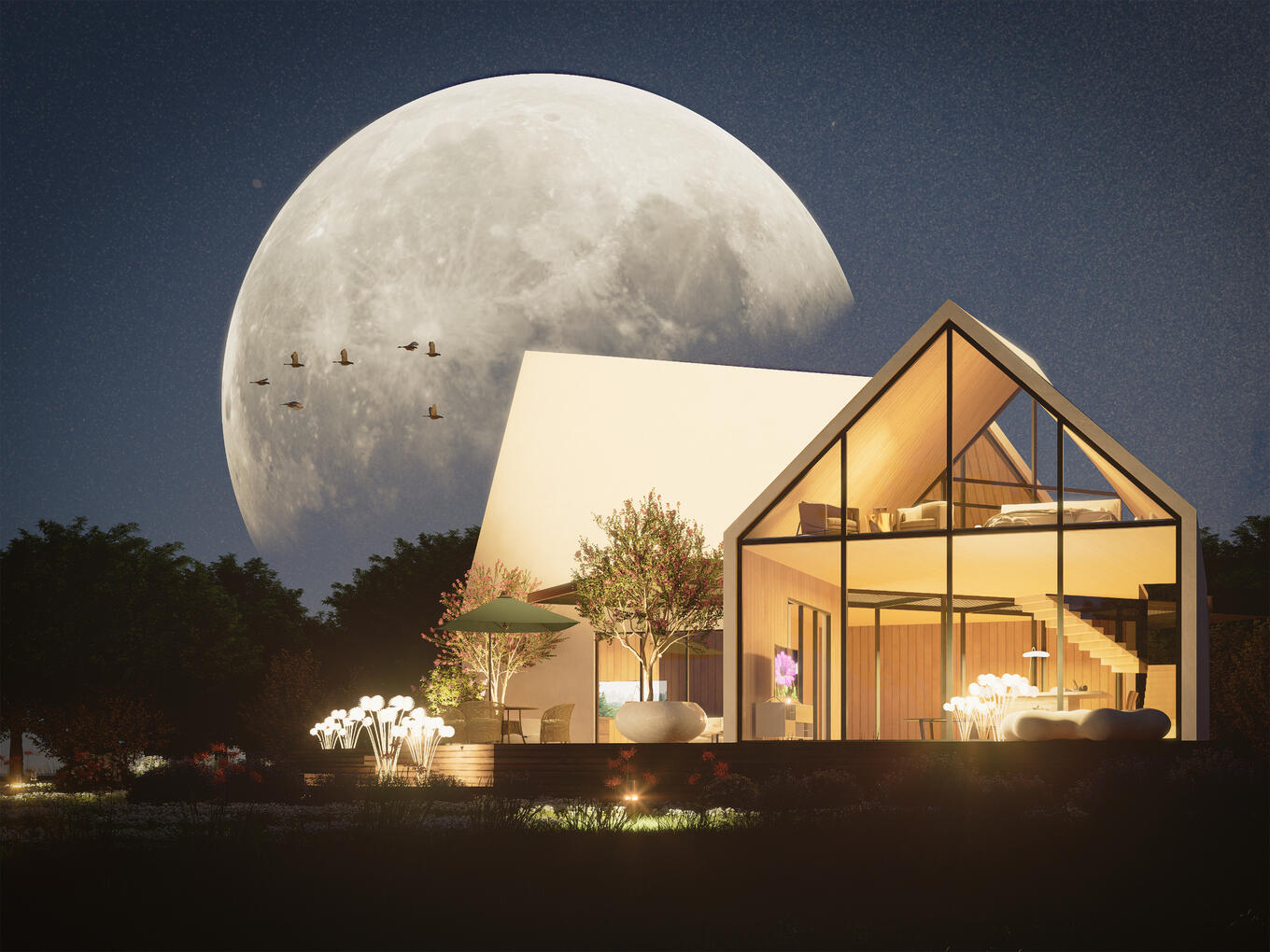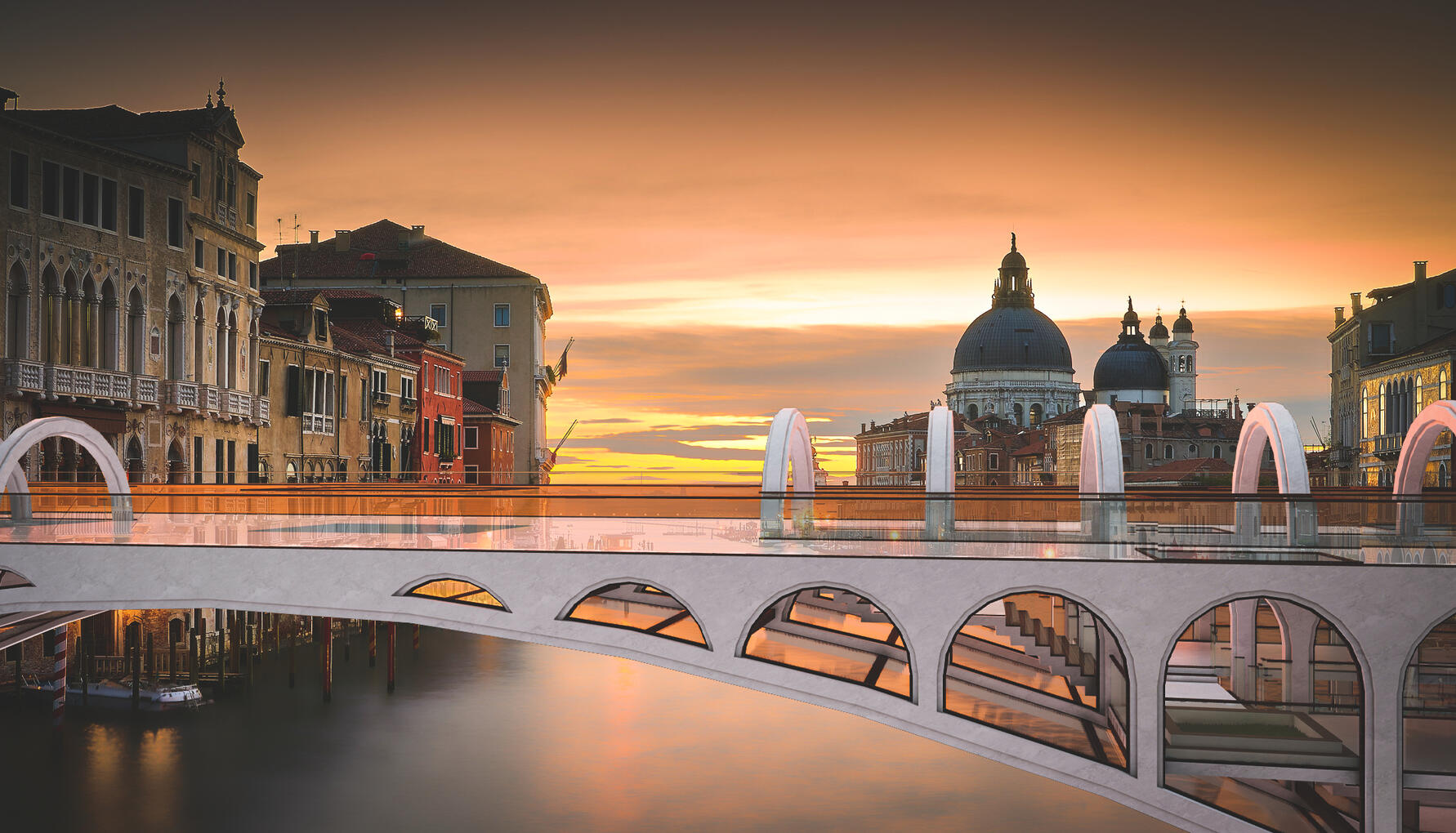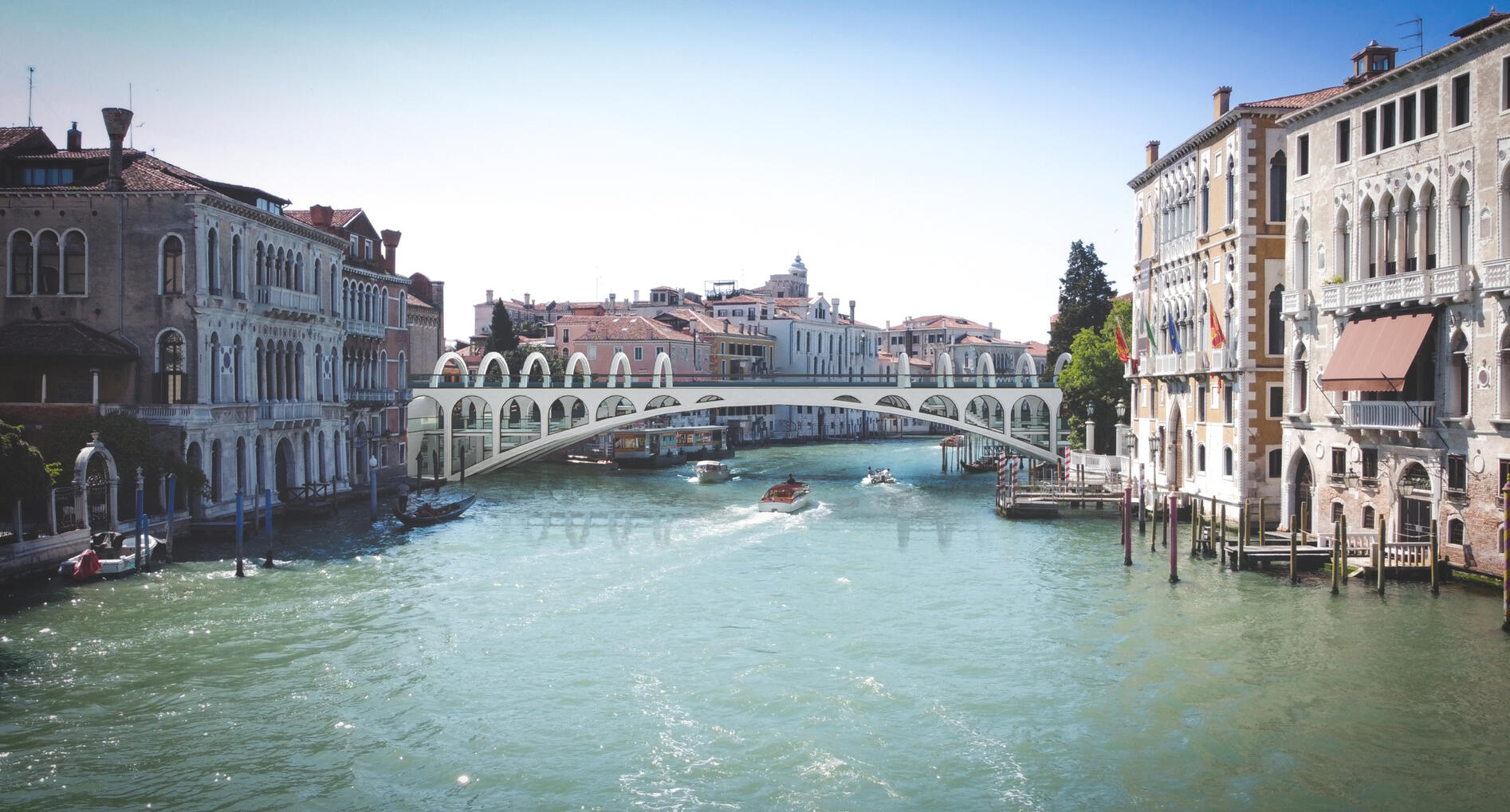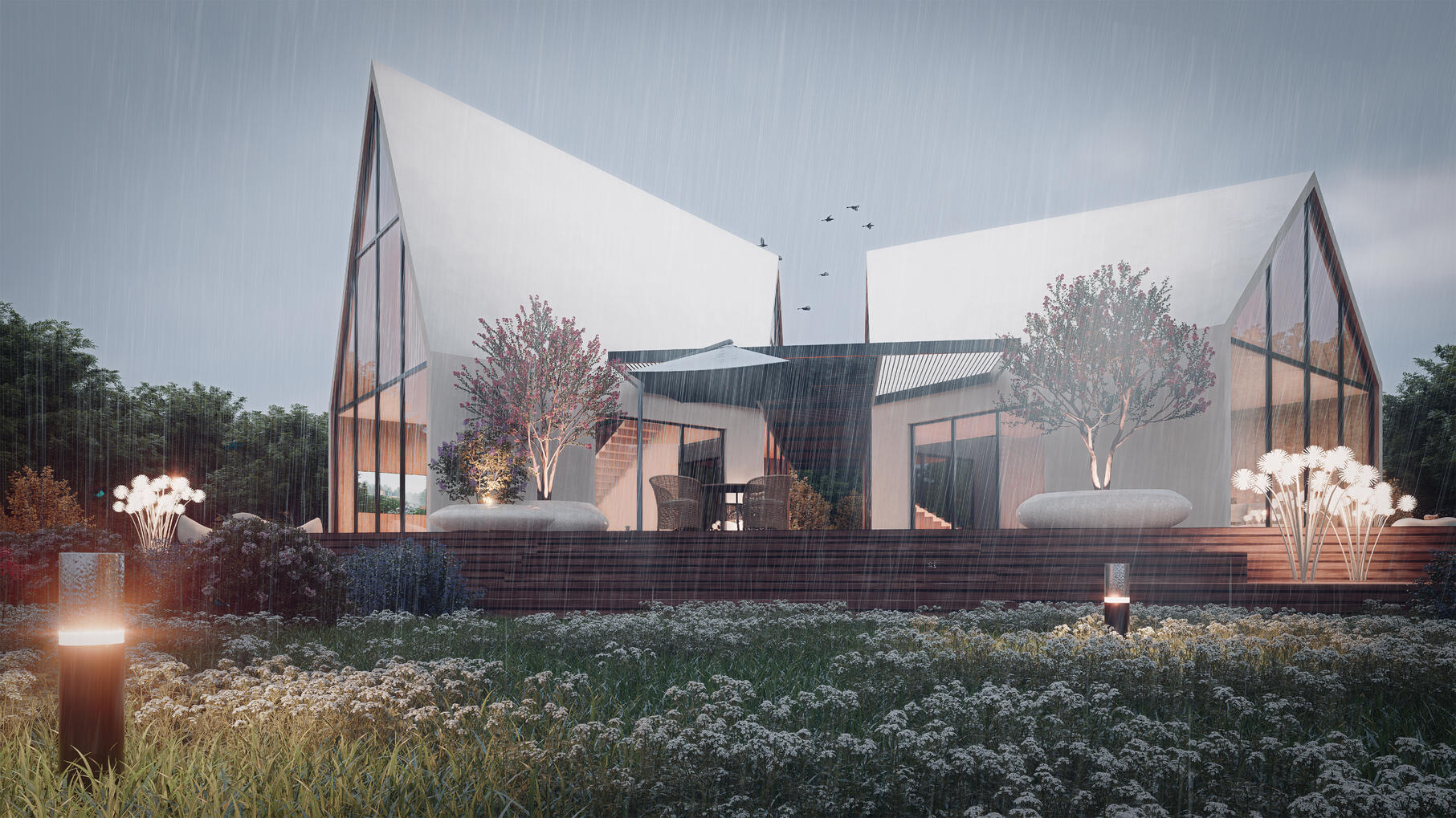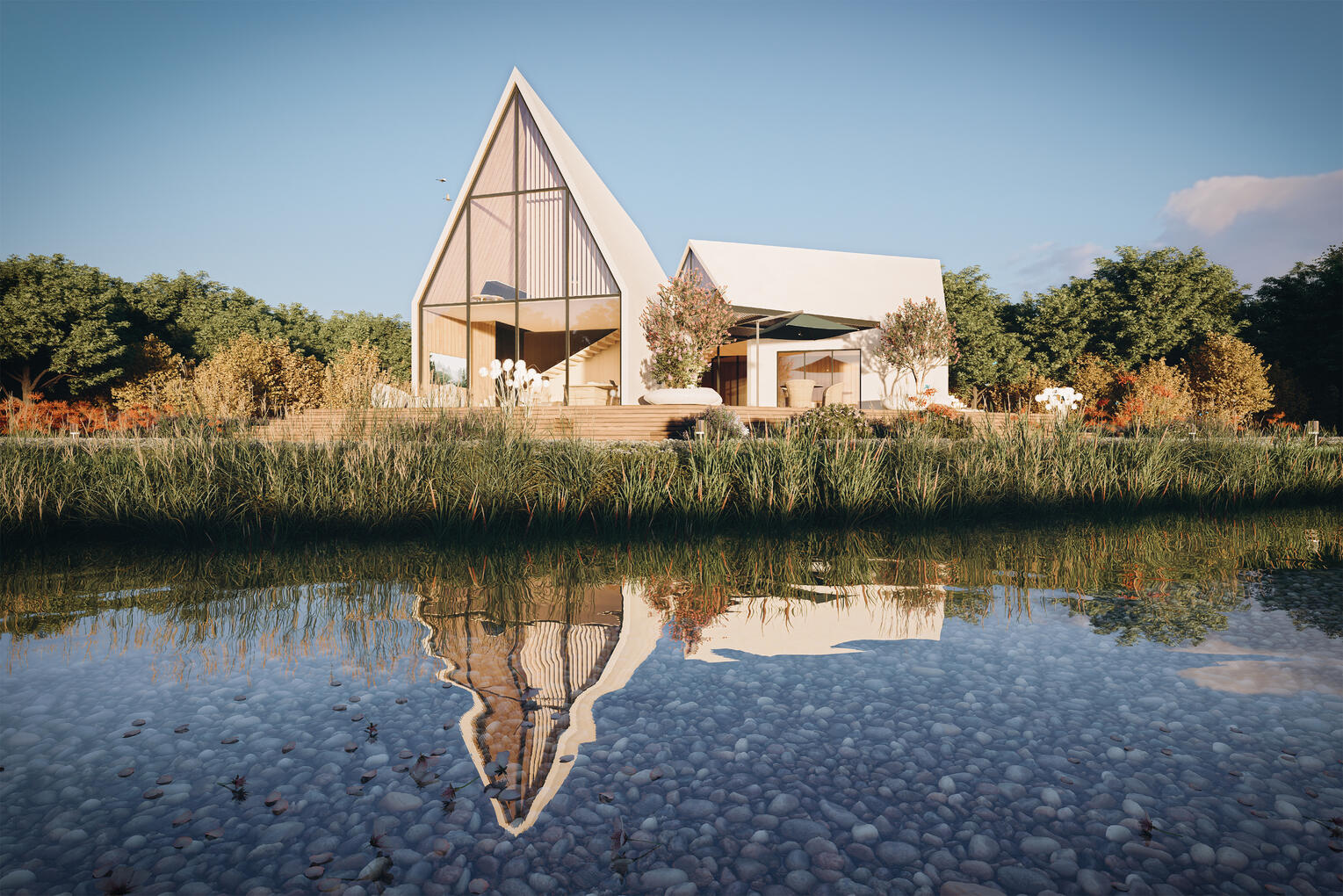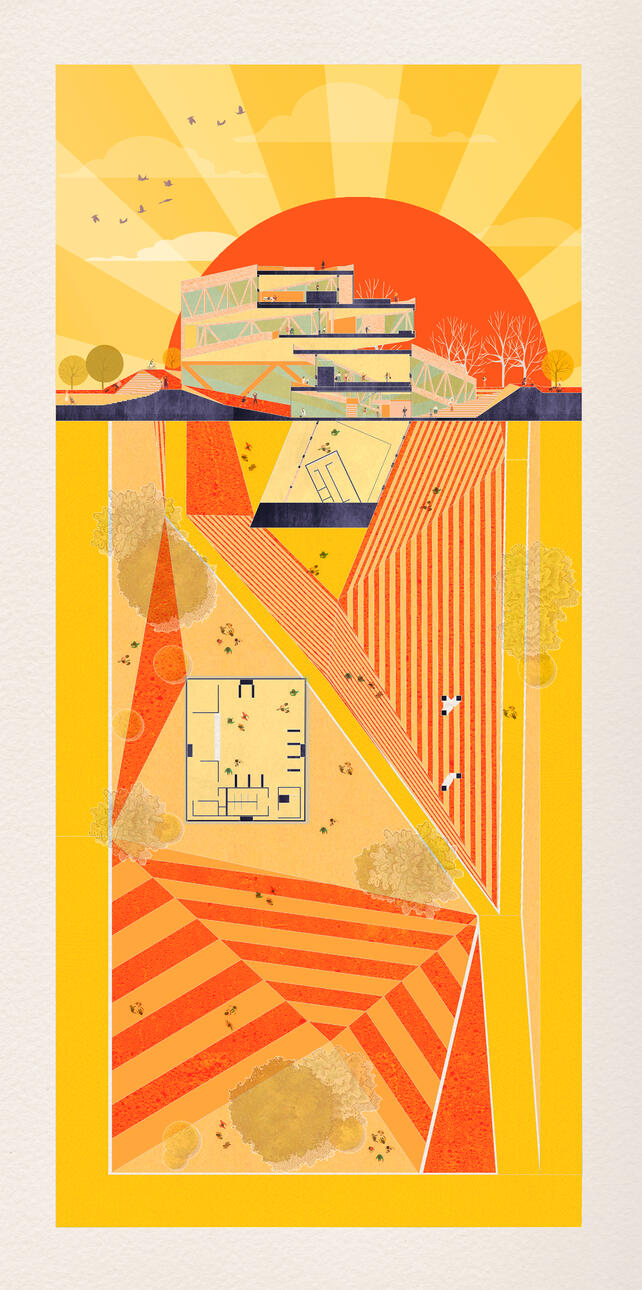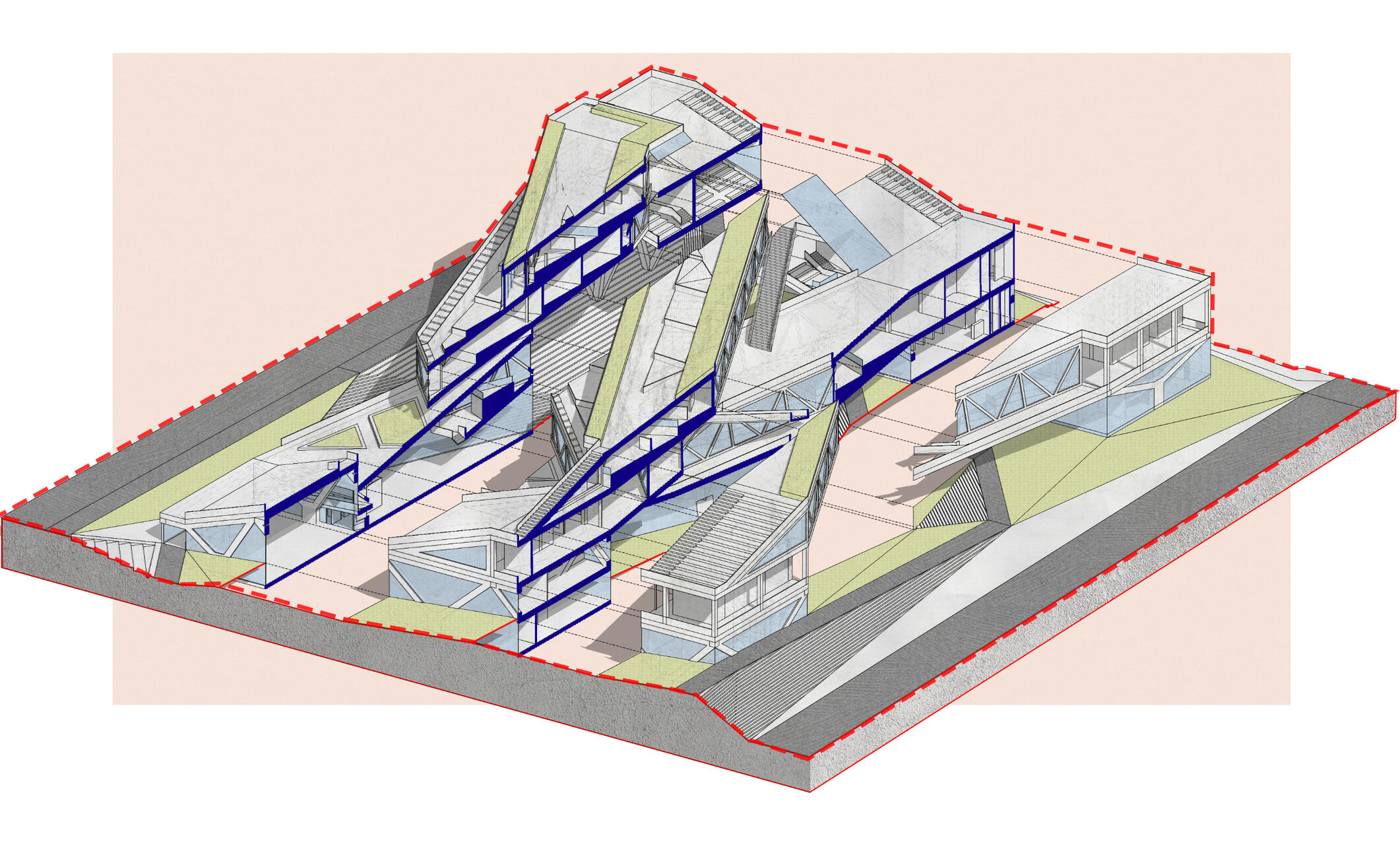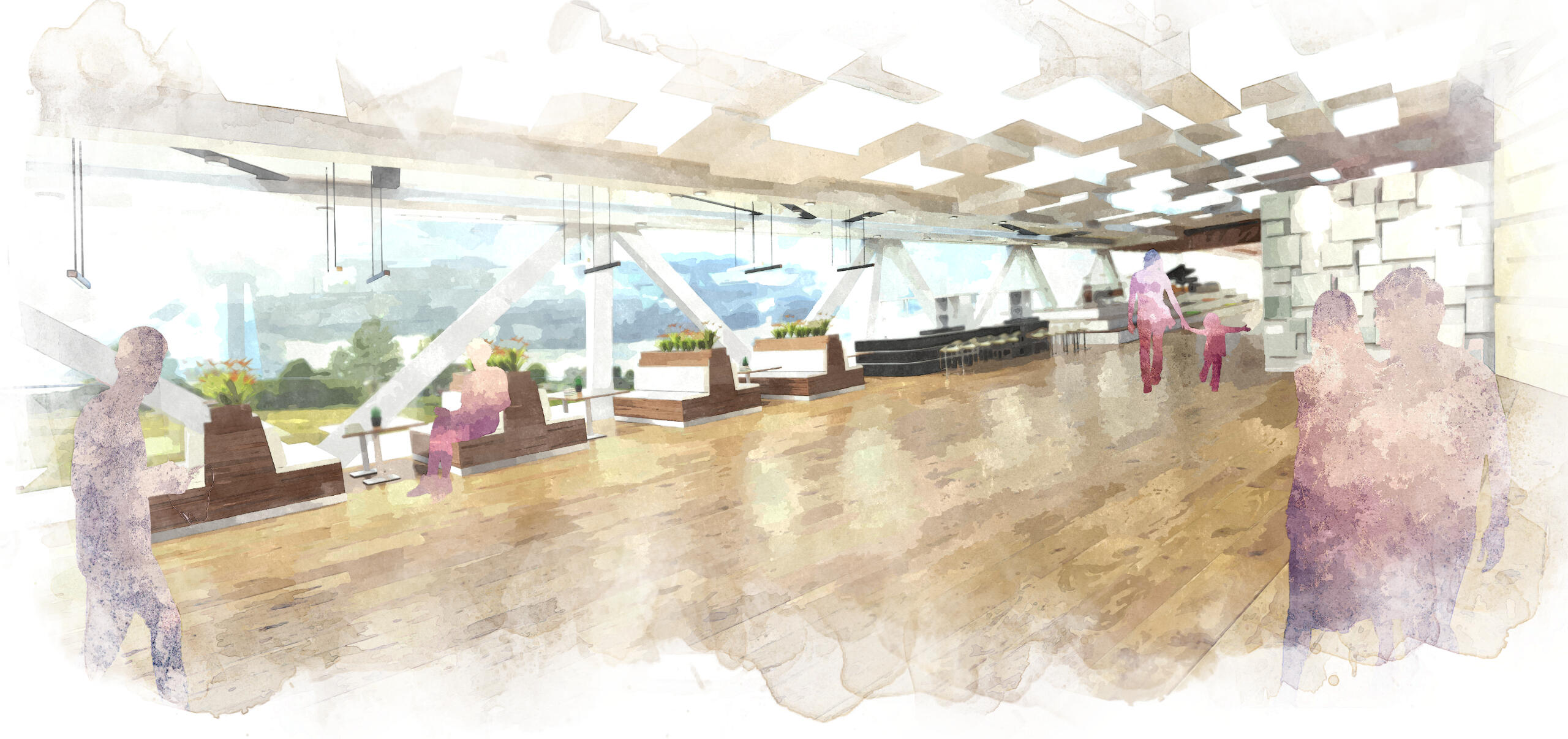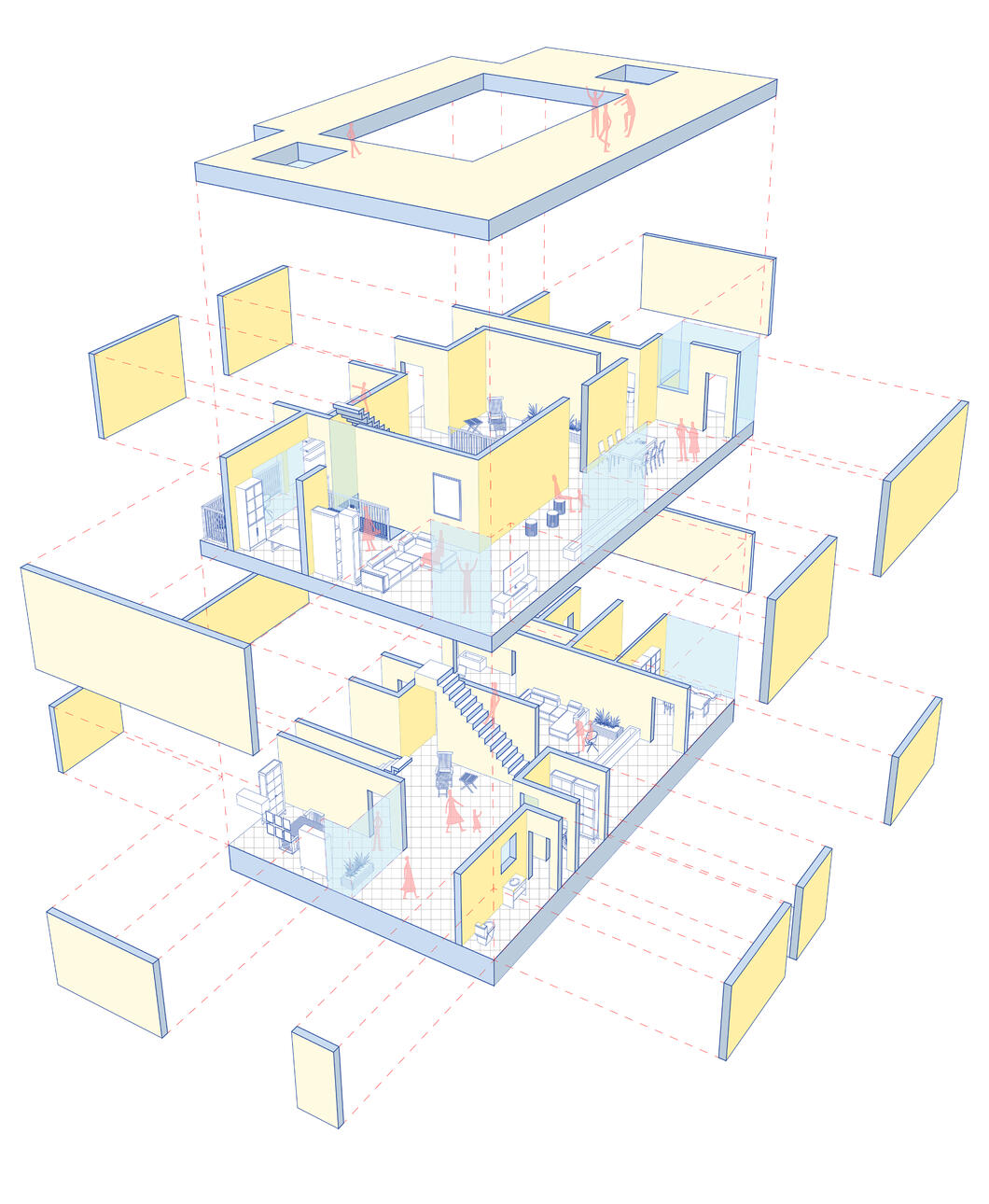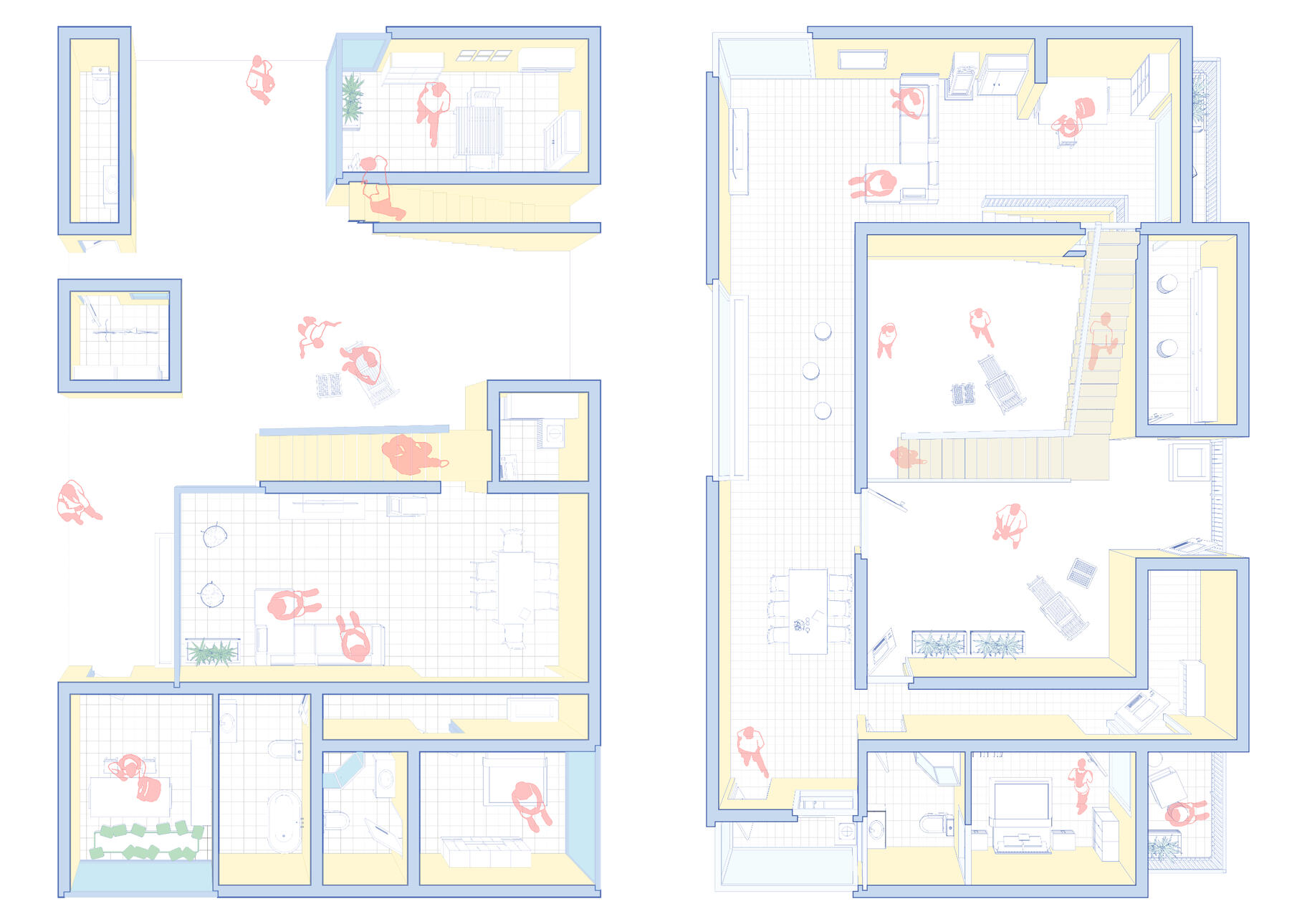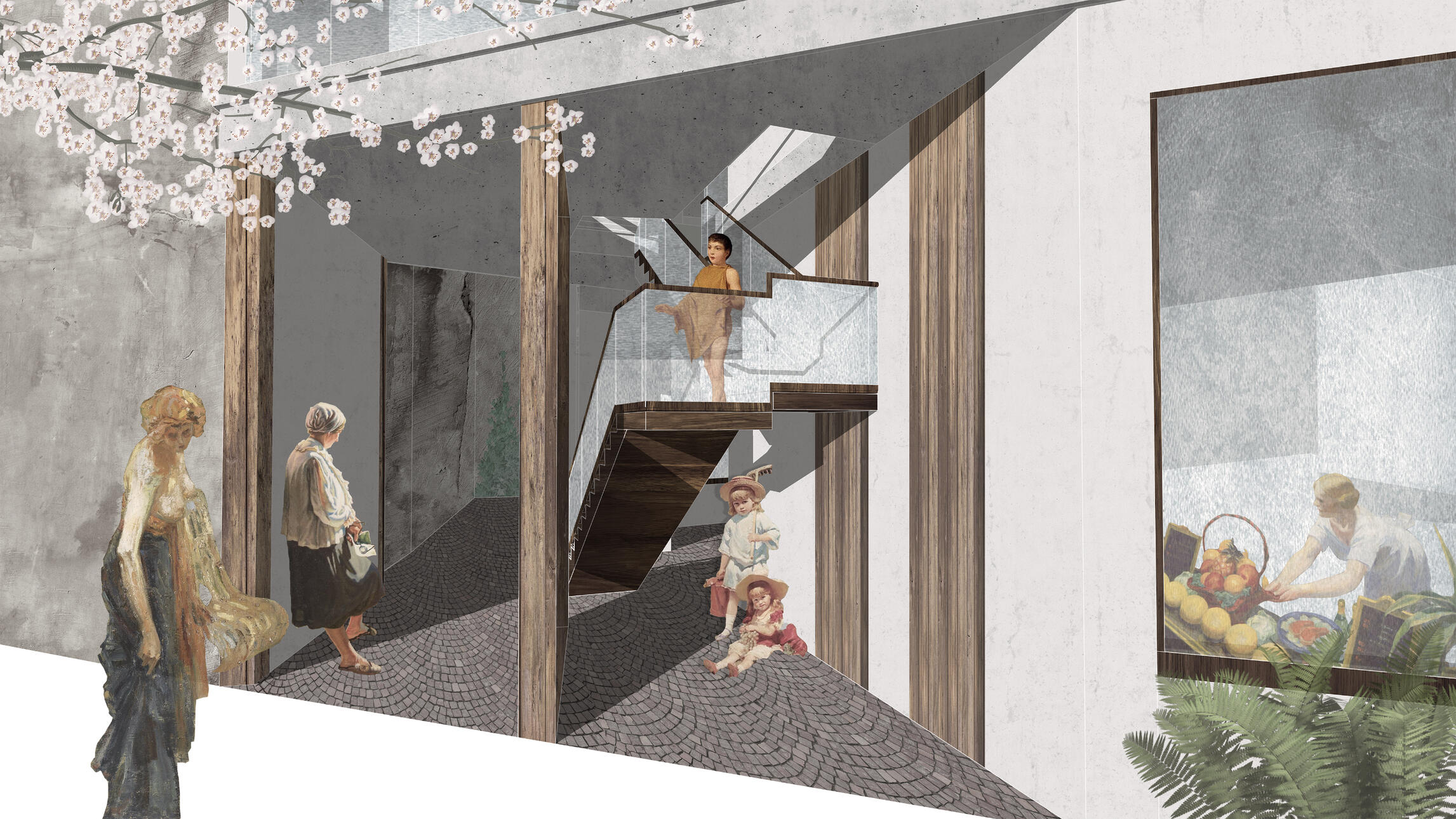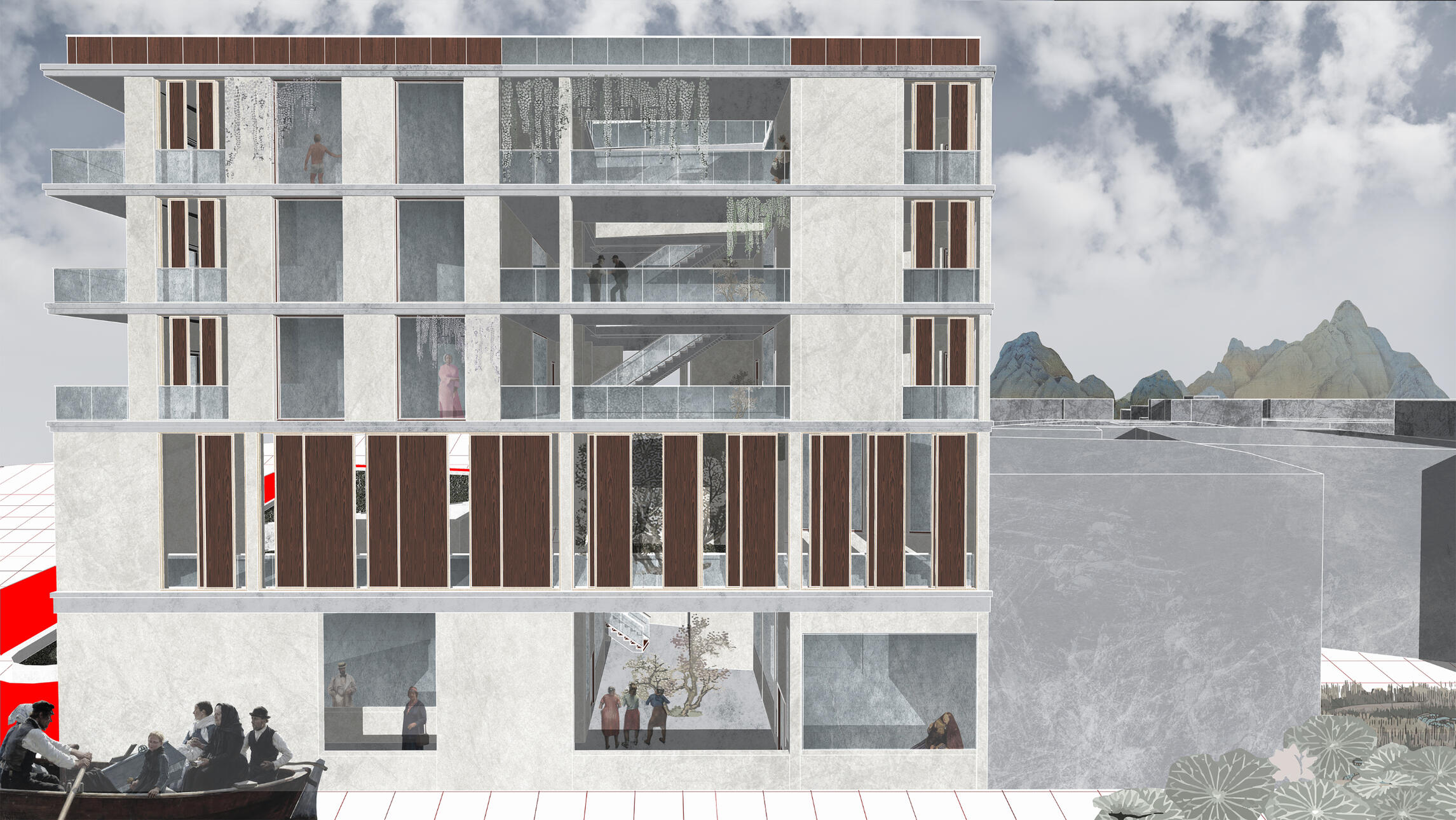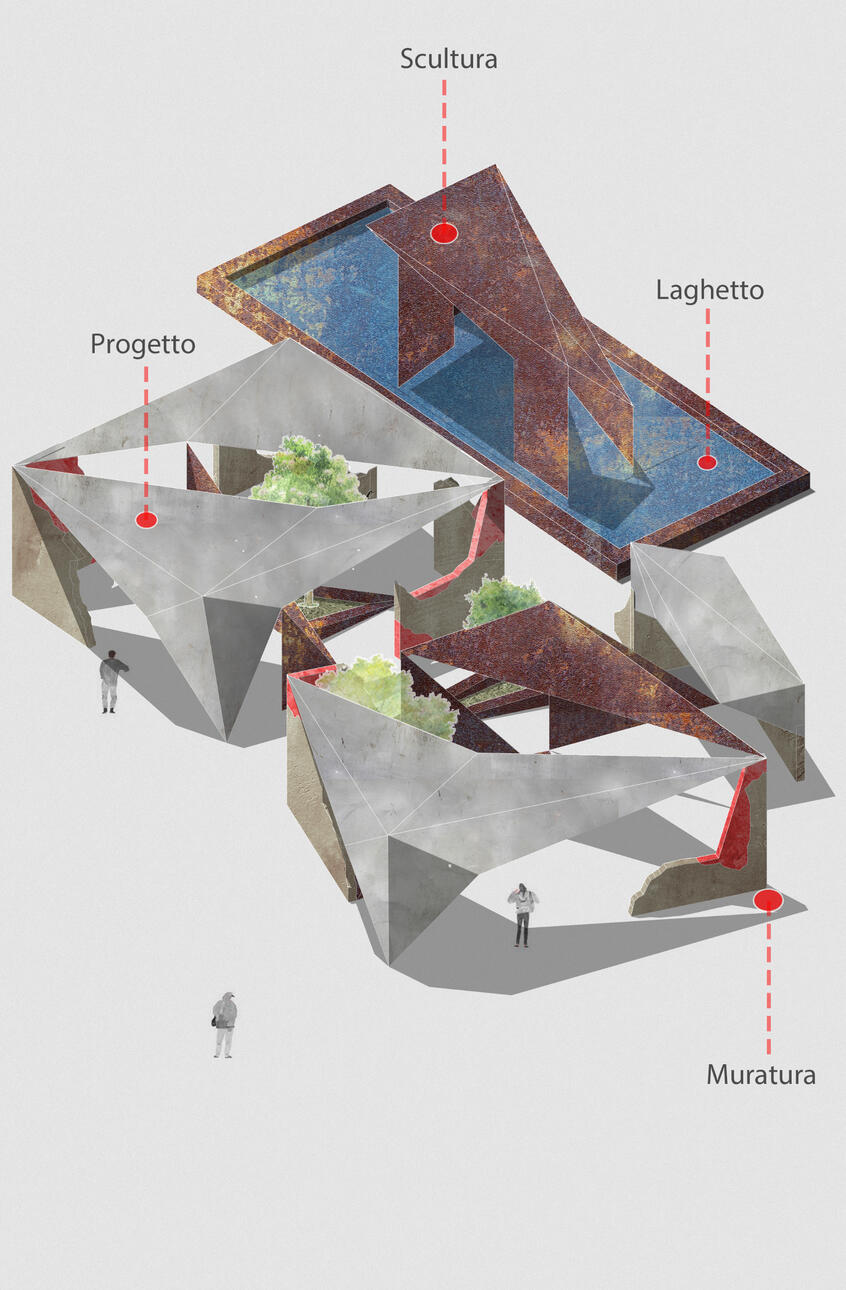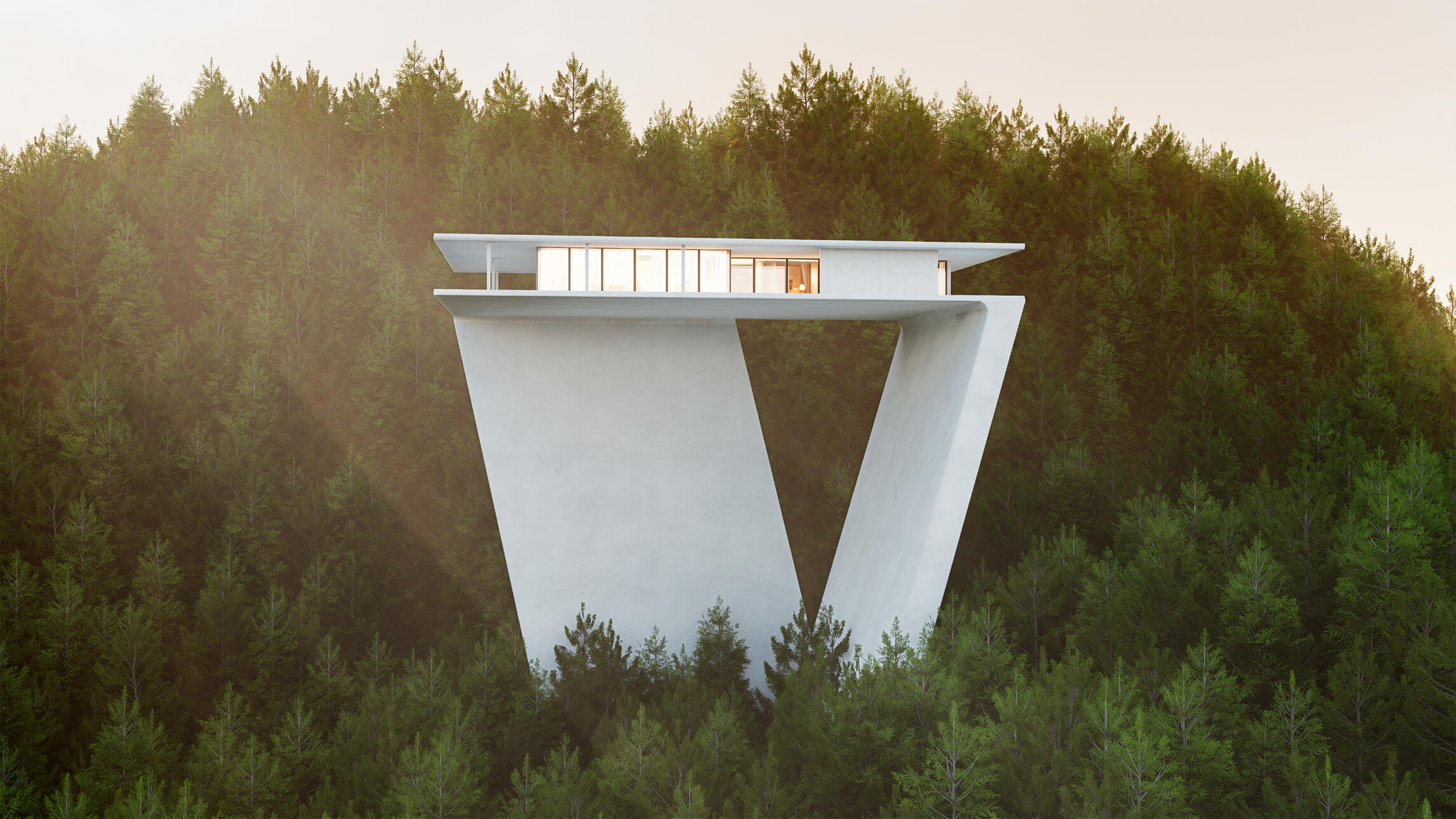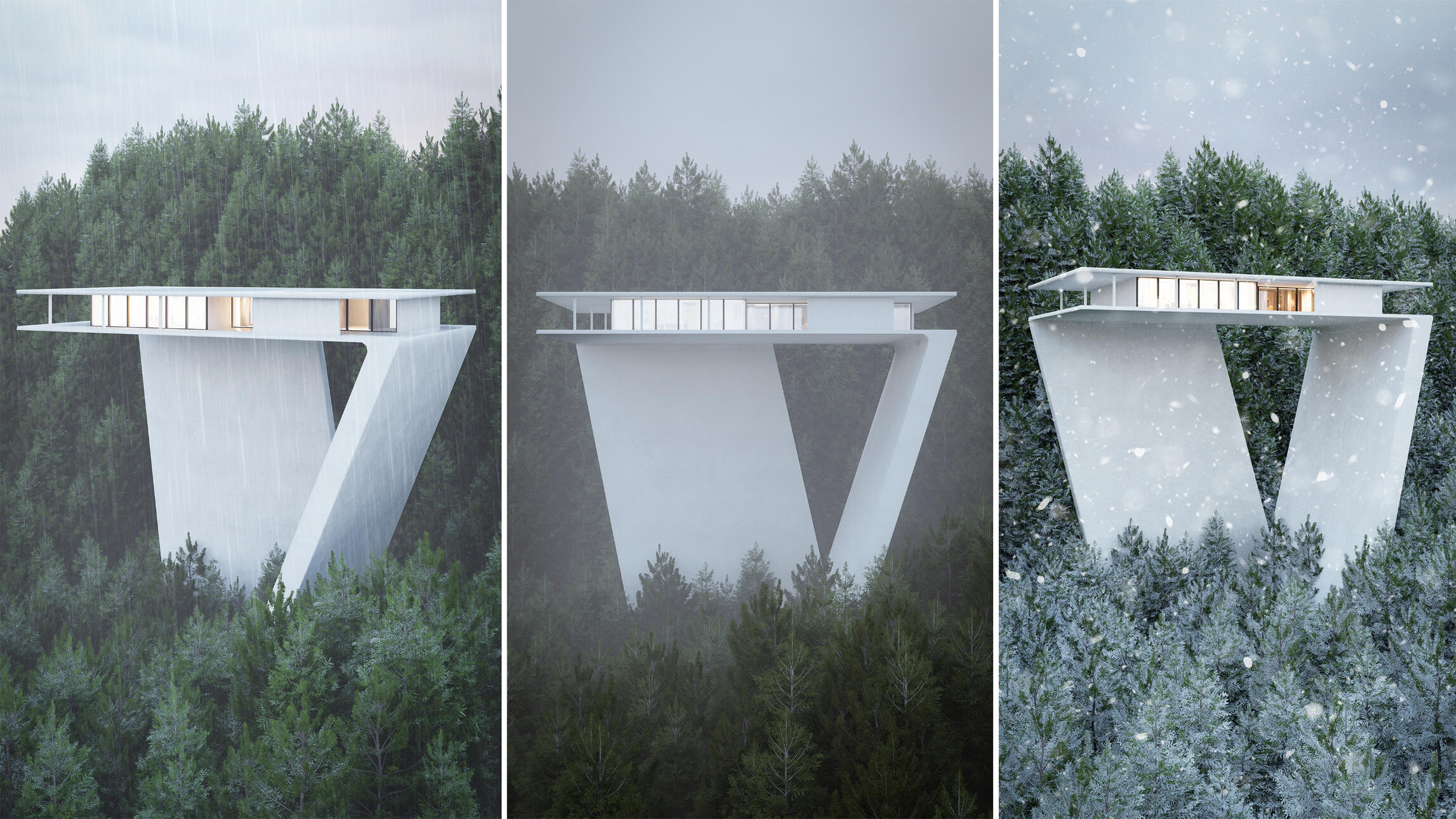
Visora
绘曦•筑境
Crafting Poetry from Pixels
Philosophy & Brand
"Art does not reproduce the visible; it makes visible."
— Paul Klee
Moving between Eastern and Western cultures, immersed in diverse linguistic contexts, I have gradually learned to observe attentively and reflect deeply, developing a perceptive gaze capable of discerning the infinite universe concealed behind small things. I have always believed that in art, architecture, and space, true visual representation is never merely a replication of reality, but an inquiry—a meditation on essence. Visora was born precisely from this conviction.The prefix "VIS" derives from terms like "Vision" and other vocabulary related to visual perception. "ORA," with its elegant sonority, echoes the suffix of the Latin term "Aurora," evoking birth, hope, mystery, and elegance. In the Italian context, "Visora" also conveys a sense of professionalism, precision, and punctuality. In Chinese, we have given it the name "绘曦筑境," expressing our aspiration to present poetic beauty. In every language, in every culture, Visora embodies a humble quest and a constant striving toward beauty and the essential.My name is Tian Jiapeng, founder of Visora. I earned a bachelor's degree in Environmental Design in China(ZZU), followed by a master's degree in Architecture in Italy(UNIPR). These two educational paths have confirmed a fundamental truth: architecture and space are never limited to material structures, but are continuations of history, condensations of culture, sparks of inspiration, questions about the future, and reflections on the present.When we speak of form, rhythm, and narrative, architecture and space transcend the boundaries of function and matter, transforming into a free and pure art. In my academic research, typology, iconology, and cultural symbols have formed the core of my thinking, nurturing my profound interest in image and visual expression. As Louis Kahn said: "A great building must begin with the unmeasurable, must go through measurable means when it is being designed and in the end must be unmeasurable." I believe that architectural visualization is not merely a means of representation, but a medium that breathes new life into space. It makes the immeasurable spiritual dimension perceptible through measurable media, ultimately allowing it to return to a new form of the immeasurable.The birth of Visora represents a continuation and elevation of my academic and professional journey. It is more than a brand focused on visual expression; it is a utopia—a space for imagining how architecture and space can be perceived and elevated into art. Visora is dedicated to providing architectural and interior space visualization services rich in narrative depth and artistic expressiveness. Beyond technical image output, we focus on the artistic presentation of scenes and atmospheres—making each frame a continuous reflection and profound interpretation of the essence of architecture and space, that is, making the invisible visible.
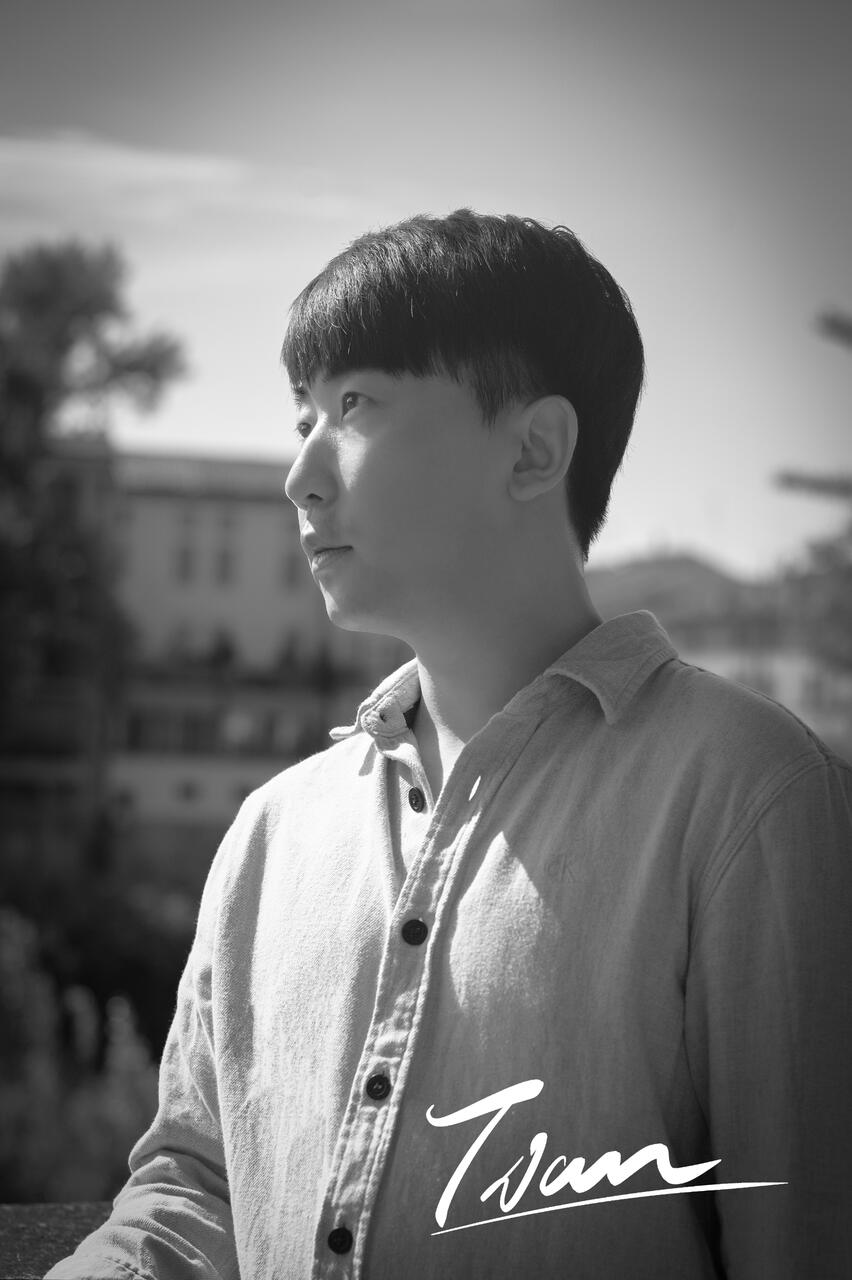
The Philosophical Essence of Visora
A Philosophical Triptych Born from Poetic Reflection
The Visora brand logo is the collaborative creation of founder Tian Jiapeng and senior graphic designer Liu Zhonghao. The design process, characterized by numerous revisions and profound contemplation, has crystallized into a visual symbol imbued with deep philosophical meaning.The inspiration draws primarily from Heidegger's philosophical interpretation of "dwelling poetically" (dichterisch wohnen)—wherein design represents a poetic response to Being. This foundation is enriched by the philosophical metaphor of the "creative hand" from Michelangelo's fresco, The Creation of Adam, and finally by the celebrated Chinese parable of Zhuangzi's "butterfly dream," which explores the boundary between reality and dreams.These three philosophical elements harmoniously converge in a single graphic symbol, where the stylized contour of the creative hands elegantly transfigures into a butterfly. This minimalist synthesis embodies Heidegger's reflection on Being, Michelangelo's creative beauty, and Zhuangzi's oneiric ambiguity. The three visions intertwine and mutually enrich one another, forming a profound and timeless philosophical message.
The Call of Being
Heidegger's "Dwelling Poetically"
"Voll Verdienst, doch dichterisch, wohnet der Mensch auf dieser Erde."
—Friedrich Hölderlin, In lieblicher Bläue
Martin Heidegger, in his essay "... dichterisch wohnet der Mensch ...", examines the essence of human dwelling. Drawing upon the renowned verse by German poet Hölderlin, "Full of merit, yet poetically, man dwells on this earth," Heidegger elucidates the relationship between Being and humanity—suggesting that only by dwelling poetically can one truly harmonize with the Being of the earth. In other words, dwelling should not merely be utilitarian existence, but rather a poetic bestowal of meaning and beauty upon life.This insight serves as the philosophical prelude to our design of Visora's brand logo: the designer's creation becomes a call and response to "Being," while architectural and spatial design should be poetic interpretations and expressions of space.
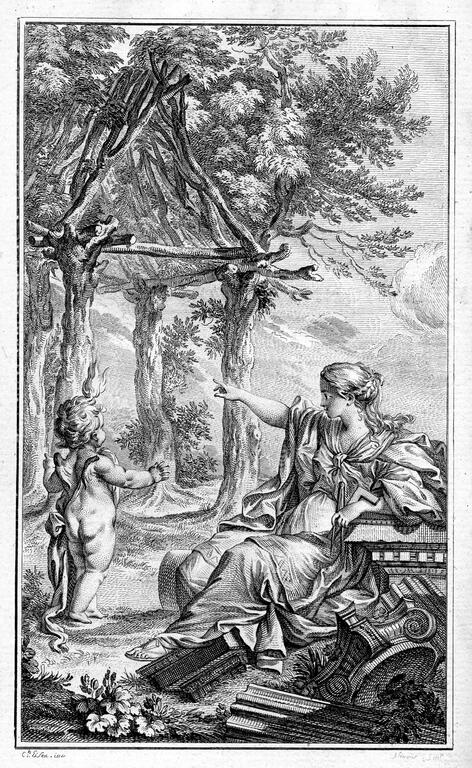
The Revelation of Creation
Form and Manifestation in the Sistine Chapel
“La forma universal di questo nodo credo ch’i’ vidi, perché più di largo, dicendo questo, mi sento ch’i’ godo.”
— Dante Alighieri, Paradiso, Canto 33
Michelangelo's The Creation of Adam offers the second philosophical key to Visora's logo. In the fresco adorning the Sistine Chapel, the fingers of God and Adam extend toward one another, yet remain separated by a minimal distance. This infinitesimal gap symbolizes that which is destined to begin but has not yet occurred. The liminal void seems to represent the prelude to the manifestation of "Being." The Creation of Adam presents a profound philosophical proposition: creation is both the birth of form and the prelude to the manifestation of essence. The "creative hand" does not depict the completion of contact, but rather reveals the moment just before touch occurs. Adam's physical form is already complete, while his consciousness and spirit are being awakened. What the "creative hand" demonstrates is not merely the beginning of life, but a transformation from the invisible to the perceptible.Visora's brand logo draws inspiration from this philosophical contemplation of "form and manifestation": true creation is not simply the shaping of form, but allowing that which is hidden to become manifest. The design process should be akin to Michelangelo's depiction of the "creative hand" at that precise moment—not a repetition of the known, but a promise of what might be possible. We believe that architecture and spatial design are not merely the shaping of environment and space, but successive awakenings of the Spirit of Place(Genius Loci).
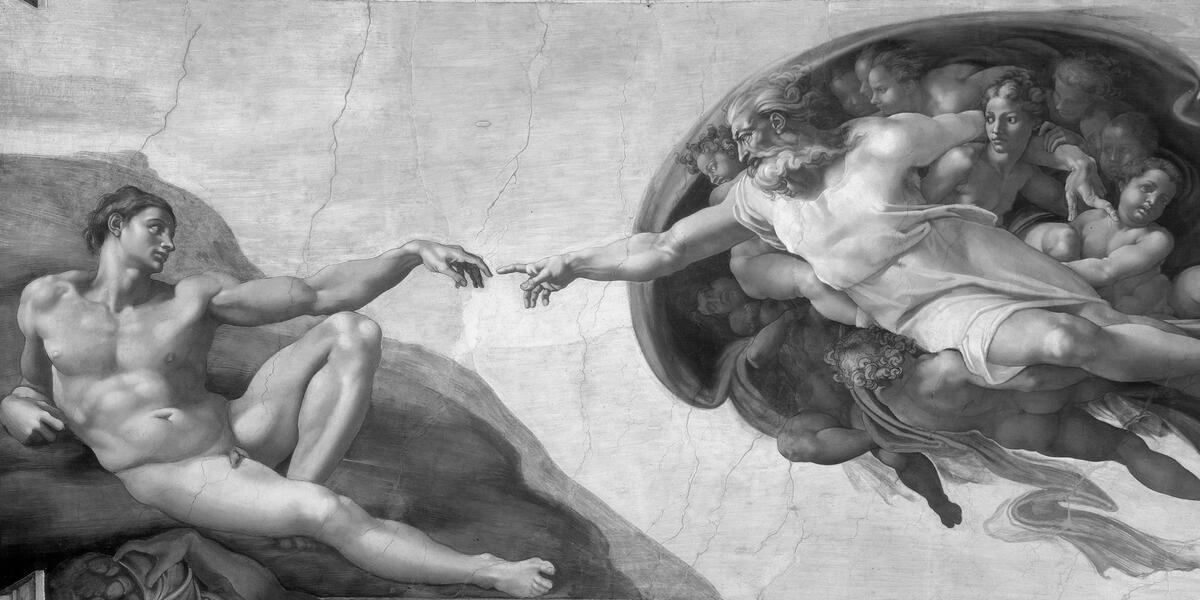
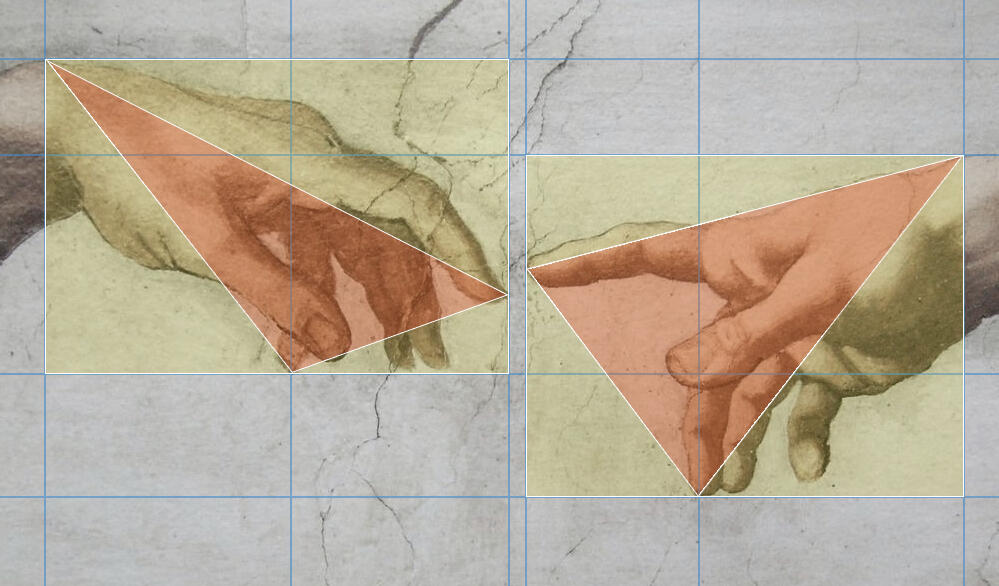
The Fusion of Reality and Illusion
Zhuangzi's Philosophical Contemplation
“昔者庄周梦为胡蝶,栩栩然胡蝶也…不知周之梦为胡蝶与?胡蝶之梦为周与?”
— Zhuangzi, Qi Wu Lun
The third inspiration for Visora's brand logo stems from the ancient Chinese philosopher Zhuangzi's "butterfly dream" parable in his work Qi Wu Lun. In this story, Zhuangzi dreams of transforming into a butterfly; upon awakening, he contemplates whether it was Zhuangzi who dreamed of being a butterfly, or a butterfly dreaming of being Zhuangzi. The boundary between dream and reality blurs, and "Being" itself seems to become an enigma.Through this dream, Zhuangzi poses a profound philosophical question: What is reality? What is dream? Does the perceived world possess certainty? Within this ambiguous boundary, he attempts to articulate that the "illusory" and the "real" perhaps never stand in opposition, but exist in a state of flux and mutual transformation. It is precisely this contemplation that elevates Visora's design philosophy to a new dimension.Beginning with the reflection of the "butterfly dream," we reinterpret architecture and space: architecture and space are not merely accumulations of material structures, but complex amalgamations of atmosphere, experience, and memory. They are simultaneously tangible yet ineffable; visible yet not necessarily real. Rendered visualizations, though originating from fiction, can awaken authentic emotions and experiences; while people situated within the material structures of architecture and space often find their perceptions infused with collective memory, cultural projections, and traces of "lived experience."Visora's brand logo thus absorbs the Eastern philosophical thought of "coexistence between reality and illusion"—between the real and the fictional, dream and reality, design becomes a bridge allowing the two to merge and transform. This juxtaposition of the visible and invisible is the very source of the spatial poetry and surrealist aesthetics we pursue.Visora is not merely rendering and design, but an awakening of the poetry of life between rationality and sensibility. From Heidegger's "dwelling poetically," to Michelangelo's "creative hand," to Zhuangzi's gentle oscillation between reality and dream, Visora's brand logo fuses the souls of these three elements, embarking on a journey of philosophy and aesthetics. We believe that design which truly touches the heart does not derive solely from rational order, but also blossoms in poetic imagination.
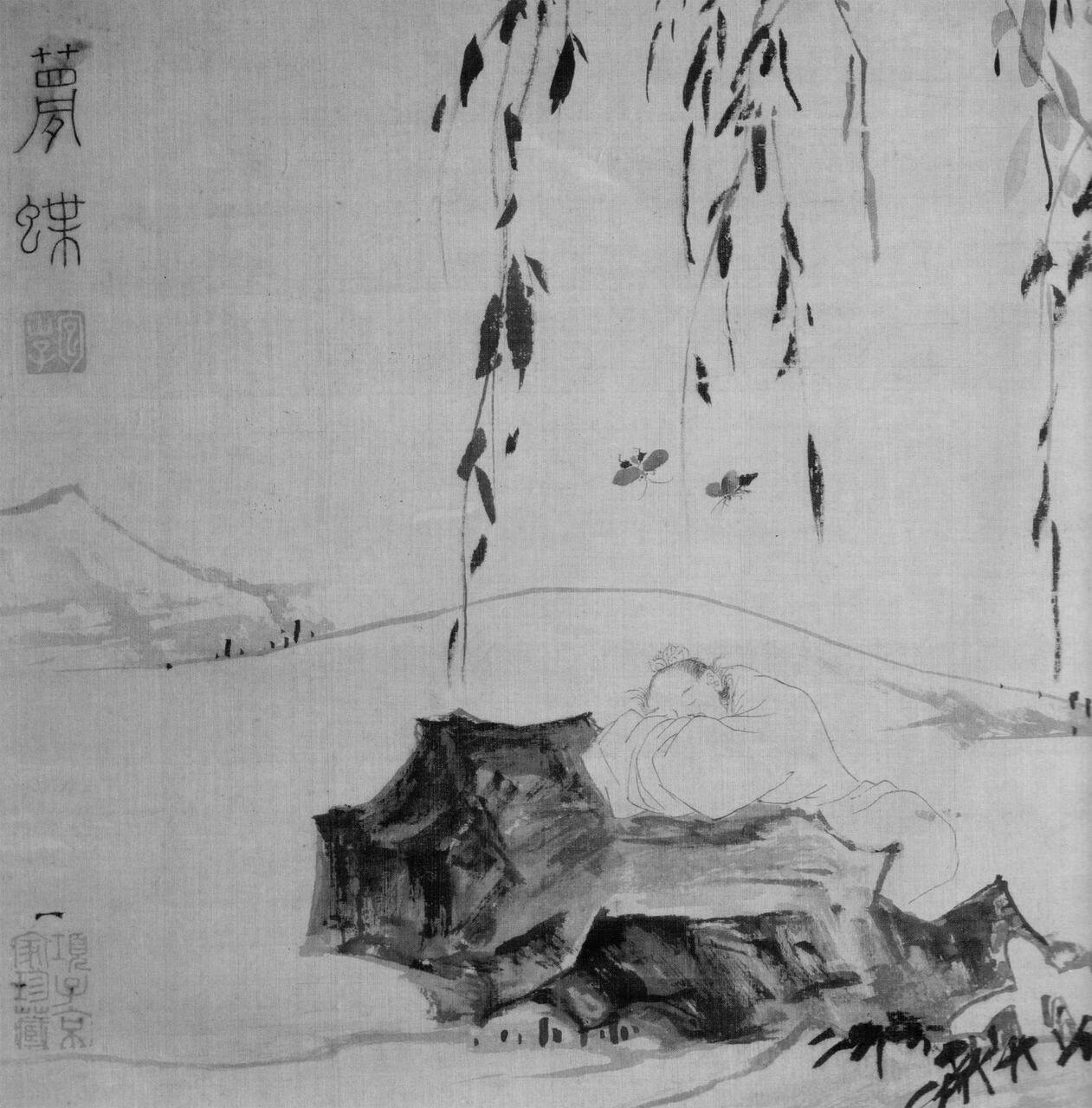
About Us
Visora is like a seed I planted with my own hands, born at a pivotal moment in my life—both the conclusion of my studies abroad and the prelude to a new academic phase.In this seemingly empty yet possibility-filled period, I chose to slow my pace, step outside established academic paths, and turn my gaze toward the concrete terrain of reality, sowing my aspirations for architecture, space, and art.Visora is also a young, growing team that carries the desire to transform my ideals into reality. Thanks to my educational journey and previous professional experiences, as well as the support of my family, I have established and maintained solid connections with the local architectural and decorative sectors in China. This background has endowed Visora, from its very first steps, with the potential to attract experienced professionals as technical mentors. Their presence not only bridges gaps in practical experience but also creates a connection between academic research and commercial operations, offering our team a broader spectrum of opportunities and visions.This period has been like a personal "Gap Year"—not an escape, but a time of sedimentation and growth. It is precisely this interplay between rationality and sensibility that makes Visora more than just a brand or studio: Visora is, above all, an attitude of continuous exploration, a daily practice of transforming the ideal into the real.
Why Choose Us
As an emerging team, we not only harbor ambitious vision but also maintain a concrete and pragmatic attitude. We understand well that what truly wins clients is not the so-called "price advantage," but consistent quality and authentic professional rigor. For this reason, we always place the quality of our work first.We are committed to providing high-standard visual works and efficient service, while also aspiring to be a trustworthy bridge between professionals and their clients, helping them win projects and establish collaborations. We recognize that our work serves not only our clients but also our own development; each commission is not merely a responsibility but a valuable opportunity to include in our portfolio as an exemplary case.Furthermore, through effective team collaboration and a deep understanding of rendering tools, we can flexibly adjust our workflow for different projects, achieving an ideal balance between efficiency and quality to meet clients' multiple expectations.The completion of rendering is not the end of our service. Based on client needs, we provide image optimization services after confirmed delivery, striving for each image to achieve ultimate expressiveness. This is both our commitment to quality and our promise to clients.
Service Scope and Client Groups
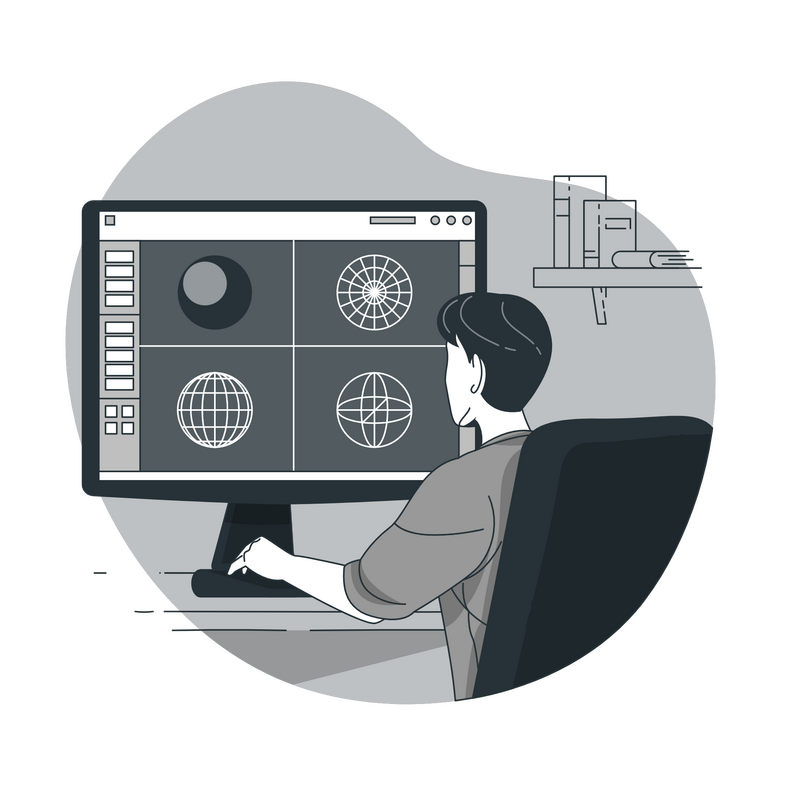
We specialize in realistic and stylized visual representations of architecture and interior spaces. Based on floor plans, models, and material references provided by clients, combined with practical needs, we render visualizations and provide design refinements from aesthetic and functional perspectives.Our services encompass: drawing and optimizing floor plans (excluding architectural construction drawings), 3D modeling, material and texture creation, lighting arrangement, rendering, and post-production aesthetic optimization. This process is not only an essential component of the design phase but also provides crucial visual references for subsequent bidding, design decisions, and construction implementation.
Architects and Design Studios
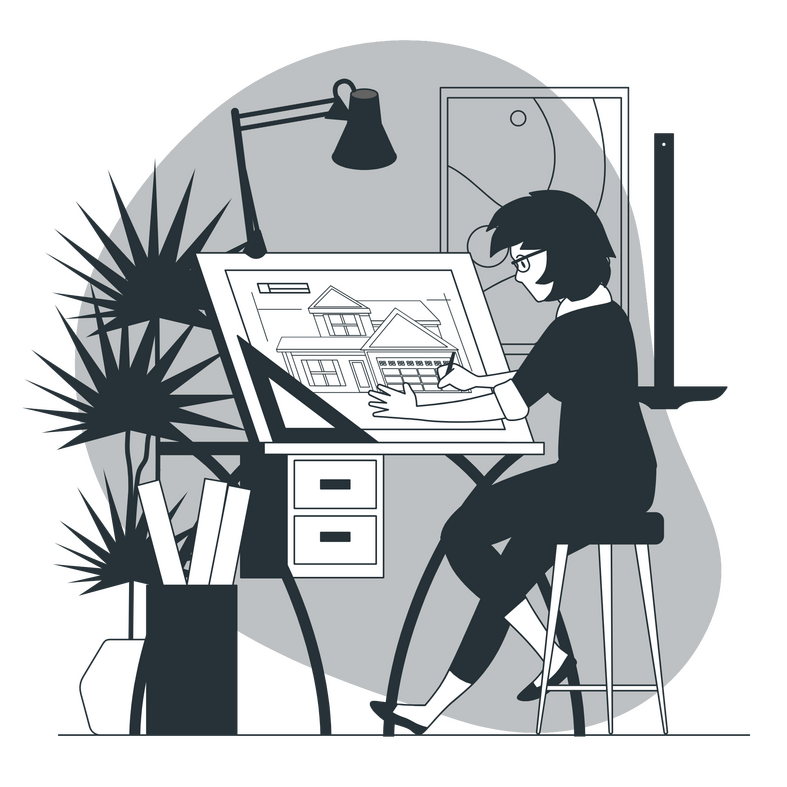
Our services help professionals more effectively showcase design proposals and reduce communication costs with clients. Through high-quality visual expression, professionals can present projects more persuasively during bidding processes, increasing success rates.Meanwhile, our design optimization support helps professionals identify potential issues in existing proposals, thereby saving project costs and enhancing market competitiveness.
Real Estate Developers and Housing Agencies

Our services authentically and vividly display spatial visual effects, helping projects stand out during market promotion.Realistic and aesthetically pleasing images not only quickly attract potential customers and shorten sales cycles but also help establish brand image and enhance overall market competitiveness.
Private Owners

For private owners, we provide high-end customized visual solutions, helping them clearly envision construction outcomes before work begins, optimize design details, avoid rework and material waste, effectively control budget and time costs, and lay a solid foundation for satisfactory construction results.Additionally, in the early stages of projects, we can create conceptual renderings based on reference materials provided by clients, helping them more accurately express personal needs and facilitating efficient communication with designers and construction teams, establishing a solid foundation for preliminary planning of housing design and renovation projects.
Responding Poetically to What We Pursue Photorealistic Rendering
Photorealistic rendering, as a common form of visual presentation, is widely applied in architectural design, urban planning, real estate promotion, and interior design. It not only highly expresses design intent but also helps clients clearly envision spatial effects before project implementation, becoming an important tool in proposal reporting, design optimization, and project promotion.• For architects, engineers, and design studios, photorealistic renderings significantly enhance a project's visual expressiveness, making it more persuasive in bidding, reporting, and client communication. For ongoing projects, precise images convey design concepts, reduce communication errors, and drive high-quality project advancement.
• For real estate developers and agencies, photorealistic rendering is an intuitive and impactful marketing approach. Vivid spatial representations effectively attract potential customers, enhance their trust and emotional resonance with the project, accelerate sales cycles, and strengthen brand image and market competitiveness.
• For private owners, photorealistic rendering is an essential path to envisioning ideal living environments. Clients can clearly perceive spatial atmospheres and detailed expressions before construction, precisely adjusting design directions, avoiding rework and material waste, effectively saving time and budget, and ensuring final outcomes meet expectations.Our advantage lies in our multi-layered understanding between "reality" and "aesthetics." The brand founder possesses dual professional backgrounds in Environmental Design and Architecture, with long-term focus on learning and practice in architectural and spatial visual representation, enabling strict quality control from a professional perspective. Team members organized by the founder possess solid professional capabilities and rich practical experience. These measures ensure our product quality and work efficiency.
Gallery

Living room

Living room

Bar

Outdoor bar

Restaurant

Luxurious bathroom

Living room

Living room

Outdoor bar

Bar

Restaurant

Hotel lobby

Entryway

Villa living room

Lakeside villa (Midsummer Night)

Lakeside villa (Autumn Night)

Accademia Bridge(Twilight)

Accademia Bridge

Lakeside villa (Rainy day)

Lakeside villa (Winter night)

Lakeside villa (Sunny day)
As If You Were Really There 360° Panoramic Rendering
The 360° panoramic rendering is an immersive visualization technology that allows users to freely explore every corner of the rendered space through mouse, touch, or VR devices, as if physically present. Compared to traditional static images, it offers enhanced interactivity and realism, significantly strengthening the expressiveness and impact of design proposals, enabling users to intuitively experience spatial atmospheres and design intentions.Currently, this technology is widely applied in architectural presentations, interior design, real estate marketing, and other fields. Rendering results can be uploaded to online platforms, allowing users to interact with the rendered spaces in real-time from anywhere simply by scanning a QR code or visiting a designated link. This presentation method not only effectively reduces communication costs between professionals and clients but also brings more efficient and innovative display methods to projects.Furthermore, leveraging the interactive and dissemination advantages of internet media, panoramic views possess strong sharing potential and viral capabilities, particularly suitable for designers, real estate developers, and brands to use in commercial displays and market promotions, further enhancing product influence and brand recognition.Compared to traditional renderings, 360° panoramas demand higher precision in modeling, lighting arrangement, and material creation. The production process is more complex, with relatively limited space for post-production modifications, and correspondingly increased production cycles and costs. Drawing on our profound experience in 3D modeling and lighting construction, as well as systematic mastery of design software and production processes, we can effectively optimize workflows while ensuring image quality, compress time costs, and provide clients with solutions that combine expressiveness and cost-effectiveness.360° panoramic views not only bring immersive visual experiences to clients but also provide designers and developers with more efficient presentation and communication tools, gradually becoming an important means in visualization solutions for various projects.
One Side Technique One Side Art
Stylized Visual Representation and Architectural Illustration
Product? Artwork? We turn the clock of design back to before the birth of Bauhaus!At Visora, we focus not only on photorealistic rendering but also deeply appreciate the artistic charm of stylized visual representation and architectural illustration. We present architecture and space through a purer visual art form, awakening the poetry of life.The brand founder, throughout a long journey of learning and practice, has mastered diverse visual expression capabilities for various projects combined with his professional background, accumulating extensive creative experience in stylized visual expression. These explorations have constructed Visora's unique style. We have always believed that there is no superiority or inferiority between realistic and stylized visual representations; they are simply suited to different design goals and expression scenarios.Stylized visual representation, with its distinctive aesthetic style and emotional expression, has attracted many professional clients and private owners who pursue aesthetic value. It is particularly suitable for design projects emphasizing personality and cultural connotations—whether architects, developers, or brands, all can stand out in a homogenized market through this form of expression, shaping a more distinctive brand image.
For professionals, stylized visual expression not only enhances the communication of design concepts but also elevates the impact and memorability of works in key stages such as bidding and reporting. Meanwhile, these works can also serve as customized gifts to deepen friendships with clients and build more stable long-term relationships.
For private owners, we can customize exclusive architectural illustrations and spatial decorative paintings based on their house forms, style characteristics, and lifestyles, transforming architecture and space into visual works rich in emotional and aesthetic value, letting poetic light shine into every corner of life.Additionally, Visora periodically engages in deep collaboration with graphic designers and artists possessing profound knowledge and professional qualities, jointly creating exclusive customized works that combine artistic value and visual impact. We have always believed that truly valuable visual expression requires not only the creator's outstanding skills and artistic taste but also respect for quality and the ultimate pursuit of detail.In today's market environment increasingly emphasizing differentiation and personalized expression, stylized visual representation works are gradually becoming an important medium connecting brand personality with target audiences. Through unique visual language rich in narrative tension, we can help clients consolidate market relationships, win orders, and shape distinctive and lasting brand aesthetic impressions. This is not only our response to a diverse market but also our original intention in establishing Visora—to interpret architecture and space through art, to discover the "invisible" within them, and to question the essence of design.
• The personal portfolio (2019) submitted for the Master's program application received commendation from the academic institution for its distinctive artistic expressiveness.
• The individual project developed during the Master's studies was included in the academic publication "Sei Laboratori per Venezia," edited by Professor Carlo Quintelli and other faculty members.
• The personal portfolio (2024), integrating works created over the years, has garnered unanimous appreciation from collaborative partners.
Gallery

Artistic representation

Illustrative style

Architectural illustration

Illustrative-style axonometric

Illustrative-style section

Artistic representation

Linear-style exploded view

Linear-style plan

Collage-style representation

Collage-style elevation

Illustrative-style landscape

Illustrated Analysis

Conceptual rendering

Scenic representation
Our Service Process and Collaboration Details
We deeply understand that behind every rendering image lies your expectation and trust in our project. To make our collaboration process smoother and more transparent, we have prepared this service process and details description to help you clearly understand how each step will unfold, which aspects require attention, and how we ensure image quality and delivery efficiency.From the perspective of the design service industry, we focus not only on the image itself but also pay attention to communication efficiency and collaboration experience with clients. This guide is like an advance "conversation" between you and us, allowing both parties to have thorough understanding and preparation before the project begins, thus enabling us to devote more energy to presenting project creativity and design results.
If you have any questions, please feel free to contact us at any time, and we will respond to you immediately.
Project Consultation
The beginning of every brilliant project starts with an in-depth exchange. We will communicate through email or face-to-face to fully understand your design needs, project background, presentation style, and delivery cycle and other key information. At this stage, you can provide us with CAD drawings, existing models, reference images or mood boards and other materials to help us precisely grasp the project direction.
With our rich experience, we will provide you with clear, efficient feedback in the shortest time possible, laying a solid foundation for future collaboration. Let us start from understanding and realize ideas step by step.
Client Feedback:
1. Preliminary Analysis of Client Needs
We will systematically analyze and integrate the project requirements presented by the client and provide feedback in written form, helping the client more clearly understand our design thinking, creative direction, and initial project positioning. This process is not only the basis for reaching consensus on the project between both parties but also the first step in ensuring that subsequent design results meet the expectations of both parties.2. Clarify Service Content and Fee Scope
Our design services cover multiple processes from floor plan optimization, 3D modeling, rendering execution to post-production image processing. Before formal collaboration, we will clarify in writing to the client the service content for this project, ensuring that every service we provide is documented, avoiding misunderstandings caused by communication deviations. This is also our solemn commitment to "service transparency" and "fee transparency," allowing clients to clearly understand the service value corresponding to each investment.3. Preliminary Quotation and Time Arrangement Suggestions
Rendering image production is a professional and detailed creative process, involving modeling, light and material adjustment, client feedback and project revision, post-processing, and other steps. Therefore, the project quotation and delivery cycle will be reasonably established after a comprehensive assessment of work complexity, software tools, and customer expectations, and various project scheduling suggestions and package combinations will be provided for client selection.
Although urgent orders in the industry are often accompanied by high premiums and more profit, as a team that values quality, we still advise clients to prioritize work quality, avoiding sacrificing image expressiveness due to time compression.We always believe that high-quality results are the core for promoting brand growth and client satisfaction.
Note: Material Security and Communication Suggestions
• To protect clients' personal privacy and the interests of both parties, we will not save or archive files of projects that have not yet been initiated. Electronic materials provided by clients will not be returned; please kindly ensure clients make backups before sending.• For projects that have already been initiated or are confirmed for execution, we recommend transmitting important content such as drawings, models, modification suggestions, etc. through email or in written form, to ensure that our information records are complete and the collaboration process is efficient.
Frequently Asked Questions
We will comprehensively assess the impact of the following key elements on project pricing:
1. Project Complexity
We will analyze the drawings, models, reference images, and other materials provided by the client to judge modeling difficulty, material richness, and lighting complexity. The higher the complexity, the greater the human, technical, and time resources required, and the quotation will be adjusted accordingly.
2. Rendering Style and Expression Requirements
Different projects have different visual style requirements, such as realistic, conceptual, situational atmosphere (night scene, rainy scene, snow scene, etc.). Each style requires different processes, expression techniques, and detail levels; we will customize reasonable solutions and quotations based on client intentions and expectations.
3. Delivery Cycle and Project Scheduling
The project delivery time limit will directly affect work scheduling and human resource allocation. If the client presents urgent delivery requirements, we may need to assign additional resources or adjust internal scheduling, which will be reflected in the quotation.
4. Expected Number of Modifications and Collaboration Mechanism
To ensure a smooth process and reduce subsequent disputes, we will clarify with the client the acceptable number of free modifications and additional modification charging standards. Reasonably setting the scope of modifications helps control budget and optimize communication efficiency.
5. Technical Resources and Software Costs
High-quality rendering relies on advanced software, professional plugins, and high-performance computing resources. Some specific technologies may generate additional costs (such as cloud rendering processing, server- dependent panoramic image composition, etc.); we will combine the client's quality needs, reasonably configure resources, and transparently reflect them in the quotation.
Completing thorough assessment and quotation before contract signing allows both parties to clarify collaboration scope, time, and cost from the project's beginning, avoiding subsequent divergences, and laying a solid foundation for the project's efficient advancement and high-quality delivery. This is both respect for the client and a manifestation of a professional service process.
We believe that an accurate, transparent, and fair quotation mechanism is the first step to achieving a win-win collaboration.
In specific situations, if the client provides complete 3D models, scenes, or related design materials, we will consider a discount after assessment and reflect it in the preliminary quotation. These materials are collectively known as digital assets, including models, lights, materials, and other elements constituting a 3D scene. However, the compatibility and integration of digital assets greatly impact rendering quality; different file sources may have issues such as non-uniform formats, inconsistent precision, mismatched styles, etc. Although extensive use of client- provided materials and models may shorten our working time and even bring us more profit, from a professional perspective, we do not recommend completely relying on client-prepared models and materials.
Rendering is a systematic work; all elements in the scene such as models, materials, lights, etc., need to be highly coordinated. Fragmented or unoptimized materials are very likely to affect the integrity and expressiveness of the final image. Therefore, while respecting client materials, we will still prioritize the following principles:
• All client materials need to be evaluated in advance for usability;
• If materials are usable and highly compatible with our workflow, we will appropriately offer a discount in the quotation;
• If materials negatively impact image quality, we will explain the risks to the client and suggest optimization solutions.
We always adhere to: quality first, service as the foundation, this is not only our original intent in creating every image but also our commitment to every client.
For most architectural constructions, interior decorations, and medium-complexity furniture or furnishing models, we can complete them with high quality, ensuring they have good aesthetics and visual performance in the overall scene. However, it needs to be specified that:
1. Product-level modeling is not the field in which architectural and interior visualization excels
High-precision, structurally rigorous industrial-grade product modeling belongs to the product design field, usually used for manufacturing, display, or engineering precision control, with extremely high modeling requirements and extremely expensive modeling costs. We are not product design professionals; out of responsibility to clients and project quality, we do not recommend clients choose us to undertake such projects, to avoid resource waste and quality deviation.
2. Our modeling strategy focuses more on expression and efficiency
In the architectural visualization field, our modeling focuses more on the overall scene expression effect and image atmosphere creation, rather than product-level precise modeling. For secondary furniture or medium- complexity models involved in the scene, we can create them for free or charge a fee depending on actual needs.
We always start from client interests, providing high-quality services within our capabilities.
Contract Signing
After one or more rounds of in-depth communication and reaching consensus on the core content of the project, we will send you a formal quotation and service contract. The contract will clearly stipulate the service scope, delivery time, project fees, number of modifications, and related execution details, ensuring the transparency and controllability of the entire collaboration process.
Once both parties confirm there are no objections, the contract can be formally signed and enter the project execution phase. We will collect a certain percentage of the total project amount as an advance payment from you, used for project initiation and to guarantee the efficient advancement of subsequent services. The purpose of this advance payment will be clearly stated in the contract. At the same time, we will strictly adhere to the industry norms currently generally applicable in the industry, therefore, you need not have any concerns about this.
With professionalism as the foundation and trust as the bridge, we are committed to creating a clear, efficient, and reassuring collaboration experience for you.
Client Feedback:
1. Formal Contract Document
We will provide the client with a formal service contract, which details the service scope, project fees, delivery cycle, modification terms, and other key content for this project. This contract is the basis for project execution and also an important foundation for safeguarding the rights and interests of both parties.2. Project Scheduling and Workflow Plan
After the project begins, we will develop a detailed phase-by-phase scheduling plan, covering key nodes and final delivery times. Regarding project revisions, we will arrange modification appointments with the client based on project progress and client feedback. When we receive client feedback, we will arrange suitable time for adjustments, ensuring work proceeds efficiently and orderly.3. File Submission and Modification Standards
We will consult and clarify with the client the technical parameters of delivery files (such as resolution, format, etc.) and the scope and number of revisions, establishing a clear file submission and feedback mechanism, to enhance collaboration efficiency and design outcome quality.4. Rendering Perspective Pre-selection Mechanism
Although our work blends artistic creation and expression, its essence still belongs to professional technical service. Therefore, we highly value the client's subjective intentions regarding composition and perspective.
In the early stages of the project, we will invite the client to provide the desired rendering perspectives or visual focal points, and on this basis offer professional advice, optimizing from the perspective of design expression and visual performance, ensuring the final image possesses excellent visual expressiveness. We will pay special attention to detailed modeling and material optimization in the content of the selected perspective, thereby achieving a higher standard of performance effect.
Note: Explanation on Advance Payment and Payment Methods
Since our services are highly customized creative services, the labor results cannot be resold. Therefore, before the service contract is signed and the project is initiated, the client needs to pay a certain percentage of the total project amount as an advance payment, as the initial cost for the project, for the service contract to take effect. The amount of this advance payment usually does not exceed 40% of the total amount, and the specific amount and percentage will be clearly stated in the contract based on the project type and service content.
For projects with high complexity, long periods, or relatively large total amounts, we recommend both parties adopt a phased payment model (usually three to four installments), ensuring the steady advancement of collaboration and safeguarding the interests of both parties.
The advance payment is used to cover various costs in the early stages of the project, including communication and preparation, contract drafting, 3D modeling, etc. Therefore, once the project is officially initiated, unless there is a breach on our part, the advance payment will not be refunded, and we ask for the client's understanding.
Advance Payment Dispute Handling and Responsibility Definition
To avoid disputes arising from understanding differences, the following clauses are added to clarify responsibility boundaries and handling mechanisms:• Non-performance Reason Refund Exceptions:
If the project cannot proceed due to reasons on our part (such as serious delay, inability to complete the project as agreed, or active termination of collaboration), we will partially refund the unconsumed advance payment based on the actual project progress and completed work, after assessing a reasonable amount. The refund proportion will be subject to written consultation, ensuring fairness and reasonableness.• Client Unilateral Project Termination:
If the client unilaterally cancels the project after initiation due to personal or non-our-part reasons, the already paid advance payment will be used to compensate for our already incurred costs and investments, and will not be refunded. If the project has already entered the next phase, the client should still pay the fees corresponding to that phase.• Advance Payment Nature Explanation:
The advance payment (Acconto) does not have the legal nature of a deposit, and is not subject to the provisions in Article 1385 of the Italian Civil Code regarding "confirmatory deposit (Caparra confirmatoria)" where "the defaulting party must return double". Its legal nature is that of an advance payment for service, used to pay for the initial costs of the project, and unless otherwise agreed, does not carry the obligation of return.• Written Communication Prevails:
All communications regarding advance payment percentage, purpose, payment time, and dispute handling will be based on the formal contract and emails or written documents between the client and us, verbal commitments do not constitute constraints.
Frequently Asked Questions
This practice is extremely common in the rendering and design service industry, for the following reasons:
1. Ensure Resource Allocation and Time Reservation
After the advance payment is received, we will formally arrange human and technical resources, and reserve an exclusive work cycle for that project, ensuring rapid and efficient advancement after the project starts.
2. Reduce Risk, Demonstrate Collaboration Intent
The advance payment demonstrates the client's willingness to collaborate and confirmation of contract effectiveness, can effectively prevent resource waste caused by temporary project cancellations, delays, or mid- way changes, ensuring our work stability and invested costs. Additionally, the advance payment is also fair for the client, if both parties are satisfied and the transaction is completed, in the project delivery phase, the client only needs to pay the balance.
3. Distribute Initial Costs, Support Continuous Operations
Rendering projects generate many investments in the early stages, including modeling, material integration, scene building, project scheduling, etc. The advance payment mechanism helps reasonably distribute these costs, supporting us in providing continuous, high-quality services with higher standards.
4. Clarify Contract Effectiveness and Project Exclusivity Guarantee
The payment of the advance payment also marks the formal effectiveness of the service contract. After receiving the advance payment, we will initiate the work plan for that project, and depending on the project size, prioritize locking available resources. This means we may postpone or decline other commissions to ensure the smooth progress of this project.
We understand that some clients may be concerned about flexibility issues after paying the advance payment. For this, we always maintain openness in communication and transparency in project management, ensuring the client can clearly understand work progress and phase outcomes at every stage of the project. At the same time, we suggest clients make the advance payment after confirming project requirements, quotation, and delivery cycle, to safeguard both parties' rights and interests. The implementation of the advance payment system is precisely to commit to a sustainable, professional, and efficient service process.
We always strive to establish clear, transparent, and sustainable collaboration mechanisms, and the advance payment system is an important guarantee for protecting client rights and interests and service quality.
1. Flexibility and Client-Friendliness
We respect the client's financial arrangements and decisions. One-time collection of all fees may cause unnecessary psychological burden to the client. Therefore, we usually only collect partial advance payment, lowering the initial threshold, creating a more relaxed collaboration experience.
2. Industry Conventions and Fair Mechanisms
In the rendering and design industry, rendering projects generally adopt a phased payment system, i.e., paying about 30%~50% advance payment as startup funds, with the balance paid after project completion and satisfaction confirmation. This practice safeguards both parties' rights and interests, reflecting collaboration fairness and transparency.
3. Enhance New Client Collaboration Confidence
For clients contacting us for the first time, a phased payment mechanism helps enhance collaboration confidence, creating a good start for establishing a long-term stable collaboration relationship.
4. High-Quality Works Stem from Co-Creation and Mutual Respect
Design and rendering are not a one-way creative process, but a collaborative design built on deep communication and aesthetic consensus. We always aspire to work with clients to polish out high- quality, engaging works. While adhering to the service spirit, we also reserve the right to moderately screen projects and clients, to ensure our creative outcomes always conform to professional standards.
We believe that an excellent collaboration relationship is a process of mutual achievement, and understanding and respecting each other's professional roles is the prerequisite for realizing truly high-quality works.
Project Revision and Client Feedback
As an emerging studio and brand filled with passion and vision, we deeply understand that: good reputation and client trust are the cornerstones of sustainable brand development. Therefore, we continuously optimize our service processes, striving to create artwork that satisfies clients.
In the highly specialized field of design and rendering, we know that technical excellence alone is far from sufficient; only by listening to the client's voice and respecting the client's ideas can we create visual works that truly meet expectations, have market value, and artistic quality.
Therefore, we always consider listening to client suggestions as an important part of the creative process, and offer a number of modifications and service quality higher than industry standards, to achieve a higher quality delivery experience and greater client satisfaction. We are willing to invest more time and resources, break the limitations of traditional service and delivery processes in the architectural and interior visualization industry, optimize the client experience, just to create satisfying and proud works.To achieve a more efficient and professional revision process, we have optimized the traditional "rendering image modification and finalization process" into two key steps:
• Model and perspective confirmation:
Ensuring that composition, visual representation content, and camera language match project goals and client needs, avoiding major modifications in the later stages, and improving communication efficiency.
• Material and lighting confirmation:
Focusing on atmosphere representation and detail texture, ensuring the final image is more realistic and expressive.This process optimization aims to improve project efficiency, safeguard the rights of both parties, and achieve the excellent final presentation of the work. We believe that every careful listening and fine adjustment is a step toward "artistic-level rendering."
Model and Rendering Perspective Confirmation
In this process, we will deepen the modeling and optimize the spatial structure based on the architectural or interior model materials you provided earlier, and the preselected perspectives confirmed during previous communication. The focus of this phase is on precisely refining the scene model and camera layout, without yet addressing the treatment of materials and lighting.
Through this confirmation process, we can efficiently identify and correct with you any problems in the model or scene, ensuring precise adjustments of structure and spatial composition in the intermediate stage of the project. This helps fundamentally avoid substantial modifications and rendering errors caused by incompatibility between materials, lighting, and the model in later stages, significantly improving the overall quality of the final image and increasing project execution efficiency and client satisfaction.
After basic model confirmation, we will provide you with an AO (Ambient Occlusion) rendering image to help you predict the final effect from macroscopic light and shadow relationships. For collaborators with professional backgrounds such as architects and interior designers, this stage facilitates verification of composition, scale, and spatial atmosphere; while for non-professional owners, the AO image can also convey design logic more intuitively through light and shadow relationships and spatial language, and we will also provide you with initial suggestions for material matching and lighting arrangement on this basis.
We firmly believe that: before entering "detail optimization," completing "overall spatial optimization" first can lay a solid foundation for subsequent material expression and light and shadow atmosphere, helping the project present a high-quality visual representation that combines artistry and professionalism.
Client Feedback:
1. Ambient Occlusion Rendering (HD | with watermark)
We will provide the client with an AO (Ambient Occlusion) rendering image, which is a scene model image without any materials or lighting arrangement. In the industry, this image is also called a "white model image" and is widely used in the professional rendering industry to evaluate the accuracy of scene modeling and composition.
In realistic rendering, the core uses of AO images include:
• Confirming modeling accuracy: helping the client identify whether there are major errors in the modeling stage or furniture component placement errors;
• Correcting design deviations: facilitating the client, partners, or design team to propose modification suggestions for the scene and model;
• Evaluating the light and shadow effects in the space: providing professionals with a judgment of the influence of natural light and ambient light in the overall composition, facilitating material optimization and lighting arrangement in subsequent processes.
The AO image we provide is in high-definition format with a watermark, for clear review while protecting the copyright security of the creative content.2. Rendering Perspective Confirmation Mechanism
After the client receives the AO image, if they confirm that this perspective can be used for final rendering, we will:
• Retain this version of the AO image as a reference for project process recording;
• Clearly mark the position of the confirmed rendering perspective in the project floor plan, to facilitate production and optimization in subsequent processes.
Note: To achieve the best rendering effect, the final image may undergo slight focal length enlargement or reduction due to material and lighting adjustments. Despite this, the final image maintains over 95% compositional consistency with the AO image shown, with only minor technical adjustments that do not affect the overall visual presentation and perspective orientation.3. Professional Advice and Subsequent Process Assistance (if applicable to the project)
Although we view rendering as an artistic creation, we firmly believe that excellent rendering is still guided by market logic and client needs. At this stage, based on the spatial composition and light and shadow relationships in the AO image, we will actively provide the client with the following professional advice:
• Aesthetic and compositional suggestions: such as furniture layout, decorative component arrangement, compositional balance suggestions, helping the client enhance spatial expressiveness;
• Light, shadow, and atmosphere suggestions: starting from the perspective of artistic expression, recommending expected directions for scene mood, light and shadow rhythm, and material matching;
• Market expression optimization: combining industry experience, proposing optimization strategies for the display effect of the final image, to better align with the project's commercial goals.
In the next process, we will combine the requirements and feedback proposed by the client with our professional advice given to the client to set up and adjust materials and lighting.4. Technical Material Assistance Suggestions (applicable to professional clients)
For professional clients such as designers and architects, we suggest providing us with the following materials in advance at this stage, to facilitate efficient cooperation and more realistic rendering representation in the next stage (if applicable to the project):
• IES lighting files or lighting fixture models: to allow us to accurately simulate the real lighting environment in subsequent processes;
• Specific material requirements: if there are materials that need to be highlighted (such as stone, wood grain, metal texture, etc.), please inform us in advance, we will focus on processing and optimizing material details in the next stage.We are always committed to delivering high-quality visual works that combine artistic and commercial value through clear structure, efficient process, and transparent communication. If the client has special expression needs for a particular perspective or scene, we also welcome in-depth communication to transform design concepts into engaging visual representations together.
Note: Considerations in the Rendering Process
Explanation on Scene and Model Modifications
In the "Model and Perspective Confirmation" stage, we provide clients with a reasonably flexible modification mechanism to ensure project quality and communication efficiency:
Free Minor Modification Rights
The client has the right to a maximum of 2 free minor model modifications at this stage, including the following content:
• Replacing individual model elements (such as furniture, decorations, partial architectural components, etc.)
• Adjusting model positions
• Making minor adjustments to all models in the scene that do not affect the main composition
After each modification submission, we will provide standard rendering images based on the current progress within 1-2 business days as feedback, facilitating quick confirmation by the client.Paid Minor Modification Policy
Starting from the 3rd modification, all minor modifications will enter a paid mechanism.
• Each modification will incur a modification fee of 5% to 10% of the total contract amount;
• This fee applies to local interventions, compositional detail optimizations, and other adjustments that do not affect the overall structure;
The modification completion time will be arranged within a reasonable period based on the current workload, usually delivered within 1-2 business days.Major Modifications and Structural Adjustments
If the modifications proposed by the client involve major changes to the scene structure, they will be considered major modifications, and the following policy will be implemented:
• Cost standard: 50% of the total project contract amount;
• The project delivery time will be reassessed and adjusted (the modification content is essentially equivalent to the workload required to restart a new project);
• The criteria for determining a major modification are as follows: Using the confirmed AO (Ambient Occlusion) rendering image as a reference baseline (in short, the current scene and model), if the modification and change of walls, architectural structures, landscape elements, main furniture components, and other model content account for 40% or more of the total image content, it is considered a major modification.
(The general industry standard is 30% ~ 35%, we provide a more lenient judgment range to maximize the protection of the client's reasonable rights)Modification and Advance Payment Terms
• If major modifications occur, the advance payment already paid by the client remains valid.
• Additional modification fees will be charged based on the original project contract amount, without establishing a new order.
• If the modification results in a substantial change in project type (such as adding new scenes, significantly increasing complexity, changing project type, etc.), we will communicate and negotiate with the client to ensure the rights of both parties.If you have any questions about the modification determination criteria, cost proportions, or delivery cycles, you are welcome to fully communicate with us in the early stages of the project. We are always committed to delivering high-quality effect images and visual representation works to you on the basis of transparent, professional, and efficient cooperation.
Packages and Value-Added Services | Contextual Rendering and Derivative Proposals
In the field of architectural and interior visualization, images showing different weather conditions (such as sunny, cloudy, rainy days) or time periods (such as daytime, sunset, night scenes) are commonly called contextual renderings or project derivative proposals.
This type of service is widely used in commercial bidding, high-end residential projects, and brand presentations, with the following values:
• Enriching the expressive dimensions of architecture and space Strengthening emotional rendering and aesthetic expressiveness
• Enhancing display, bidding, and subsequent promotional material integration
Clients can flexibly purchase this paid value-added service based on their actual needs.If rendering for project derivative proposals based on the existing scene and confirmed perspective, we will provide:
• Substantial discounts Time-limited offers combined with project scheduling
• Pricing will be reasonably assessed based on the complexity of the chosen plan.
Material and Lighting Setup Confirmation
After you confirm the model and rendering perspective, the project will officially enter the core stage of the rendering process, namely, the material adjustment and lighting arrangement stage. As a key step in the main rendering process, this phase will directly determine the realism of the image and the expressive effect of the spatial atmosphere. We will assign realistic materials and lighting arrangements to the established scene and model, further enhancing the realism and visual expressiveness of the overall space.
In this process, as the scene content continues to be enriched and details continue to be refined, the computer hardware computing power consumption and manual workload will also increase significantly. To ensure the perfect presentation of the final image in terms of realism and aesthetics, we will spend more time on multiple rounds of test rendering, to repeatedly verify material texture, light and shadow relationships, and overall atmosphere expression. Compared to the earlier stages, the work rhythm at this stage will be relatively slower, but it is precisely this focus and rigor that lays a solid foundation for the final high-quality visual presentation effect.
We always insist on using professional rendering engines to complete modeling and rendering, rather than relying on AI-generated images or over-relying on post-production embellishments. This not only reflects our high requirements for artistic quality but also reflects our service commitment to clients—to reproduce the essence of spatial design in a realistic, detailed manner.• To enhance the collaboration experience between us and the client, we still adopt a service higher than industry standards at this stage, providing the client with the right to two free modifications.
• And within 14 days after project delivery, we additionally provide free optimization services for minor adjustments, doing our utmost to ensure that the final outcome highly aligns with the client's expectations.
Client Feedback:
1. Pre-rendering Effect Image (HD | with watermark)
The client will receive a high-definition pre-rendering effect image with a watermark at this stage, which has completed material and lighting settings, and the overall effect is already highly close to the final product in terms of composition, light and shadow, atmosphere, and color.
Although the resolution has not reached the final delivery clarity, the pre- rendering effect image is still sufficient as a visual reference basis. The client can propose modification suggestions regarding material texture, color tendency, and lighting parameters and arrangement based on this version, and we will optimize further on this basis to ensure the completeness and expressiveness of the final delivery image.2. Material, Color, Lighting Adjustment Feedback and Suggestions (if applicable to the project)
Just as we provide professional composition suggestions in the "Rendering Perspective Preselection Process," to further enhance the overall expressiveness and visual impact of the image, in the pre-rendering stage, we will also provide the client with professional feedback and optimization suggestions regarding materials, colors, and lighting settings.
After the pre-rendering image is generated, we will assist the client in evaluating the current image status from the following aspects:
• Whether the material texture is realistic and appropriate, and whether it coordinates with the overall style;
• Whether the color matching aligns with the spatial quality and project positioning;
• Whether the lighting layout is reasonable, and whether it strengthens the spatial rhythm, atmosphere, and focus guidance.
Based on our industry experience and aesthetic judgment, we will provide clear suggestions on the above aspects and, combining client feedback, further refine material precision, color levels, and light and shadow expression.This stage of communication not only helps improve the final visual expressiveness of the image but also helps the client and their partners reach consensus in proposals, presentations, or implementation designs, enhancing the overall collaboration experience and professional presentation standards.
Note: Explanation on Material and Lighting Modifications
To ensure rendering quality and project progress, we have set the following rules for modifications to materials, colors, and lighting:
Free Minor Modification Rights
• The client can still enjoy a maximum of 2 free minor modifications to materials, colors, and lighting at this stage.
• Each modification will receive feedback within 1-2 business days (modifications in the material and lighting phase depend on project progress and modification difficulty).Paid Minor Modification Policy
Starting from the 3rd modification, entering the paid modification phase:
• Each modification costs 5%~10% of the total contract amount;
• We strive to achieve same-day delivery if scheduling allows;
Normal delivery time is within 1-2 business days, the same as general modification delivery time.Major Material and Lighting Modifications
If the modification involves over 60% of the main materials or lighting arrangement, it will be considered a structural major modification:
• The cost is 50% of the total contract amount;
• The project work period will be reassessed;
• The modification standard is based on previously confirmed materials and lighting settings (such as furniture models, material types, colors, IES lighting files or lighting schemes, etc.).
Since in the later stages of the project, labor costs and computer computing power load increase significantly, modification difficulty and time costs are higher. Therefore, this type of modification is considered equivalent to the workload of restarting the project.Additional Terms for Model Modifications in the Later Stages of the Project
If at this stage (material and lighting process) the client proposes minor adjustments to the model confirmed in the previous stage, an additional modification fee of 15%—30% will be charged depending on the situation. If the client unilaterally proposes major modifications to the scene model, it will be considered a unilateral breach of contract by the client. This type of situation is extremely rare, we usually suggest the client terminate the original contract or sign a new contract, to ensure the reasonableness of the project and service fairness.Post-Delivery Value-Added Modification Service (we view it as after-sales service)
To optimize the client experience, we provide free minor modification services within 14 days after delivery. The specifics are as follows:
• The client can propose minor modification needs within 14 days after paying the balance and confirming delivery;
• We will process related client needs weekly, with a delivery cycle within 7 days;
• This service is a free after-sales service, applicable to minor adjustments that do not affect the overall image.
This service aims to provide the client with greater flexibility and assurance, eliminating client concerns after project delivery.If you have any questions about the modification determination criteria, cost proportions, or delivery cycles, you are welcome to fully communicate with us in the early stages of the project. Visora is always committed to delivering high-quality design visual outcomes to you on the basis of transparent, professional, and efficient cooperation.
Packages and Value-Added Services | Scene Close-up Rendering
Scene close-ups are an extremely valuable expression method in architectural and interior visualization, capable of further enhancing the sense of atmosphere and detail expressiveness of the space on the basis of strengthening the main view.
• They not only can precisely present furniture texture and material details, enhancing the commercial transmission power of the image, but also provide strong visual support for high-end interior design projects in bidding or presentations.
• Scene close-ups are suitable for: product promotion, material marketing, high-end proposals, spatial atmosphere display, and many other professional application scenarios.
Clients can choose to create scene close-up effect images based on their actual needs.• If using the model, materials, and lighting of the current scene, substantial discounts can be enjoyed;
• This service includes a limited-time free service of precise adjustment and optimization of local materials and local lighting, further enhancing the detail expression and realism of the entire scene.
Frequently Asked Questions
• The composition does not meet expectations, the angle is not ideal, re- rendering is needed;
• The model has structural or proportion problems, material textures and lighting intensity cannot perfectly match the model, correcting these problems requires resetting complex rendering parameters;
• All visual elements are placed together, making it difficult to clearly identify modification points, resulting in low communication efficiency. (Rendering is a relatively complex technical work, materials, lighting, and even the level of detail of the scene will affect the final presentation effect, too many influencing factors stacked together make it difficult to find the cause of flaws in the rendered image, thereby reducing work efficiency and affecting the delivery experience to the client).
The traditional rendering process not only affects the rendering effect and delivery progress but also increases communication costs and modification burdens, wasting the client's valuable time and creating an extremely poor collaboration experience. We have optimized this process into two separate confirmation steps, aiming to help the client gradually focus on key decisions, improve our control over the project, avoid ineffective modifications, and save time and budget for both parties:
1. Model and Perspective Confirmation Stage
In this stage, the client can focus on judging spatial composition and visual focus. Based on the client's feedback on rendering perspective preselection in the previous process, we will provide several white model rendering (AO images) perspective sketches for the client's judgment according to the actual project situation, based on which the client can:
• Judge whether the composition is complete and conforms to the client's ideal state;
• Confirm whether the camera height, shooting range, etc. are close to the client's ideal state;
• The client can point out potential model errors, scale deviations, or unclear structural areas, which we can quickly correct at this stage.
This process helps us and the client lock in the rendering perspective in advance, effectively avoiding rework and major adjustments in later stages, improving communication efficiency.
2. Material and Lighting Confirmation Stage
After perspective confirmation, we will enter the core polishing stage of image expressiveness, focusing on:
• Adjusting material realism, detail intensity, and color atmosphere;
• Lighting layout and spatial mood creation;
• Providing professional advice, helping the client judge whether the overall "spatial atmosphere" meets the expected effect.
In this process, the client can provide feedback and modification opinions from the perspective of materials, colors, and lighting, making communication between us and the client clearer, and feedback and modifications more targeted.
What specific benefits does this process optimization bring to the client?
• Better control over the final effect of the project: the confirmation content of each stage is clear, avoiding passive acceptance of the final result.
• Reducing the number of modifications, saving communication costs between the client and us: precisely locating the source of the problem, avoiding repeated corrections.
• Saving project time, promoting faster project delivery: clear decision rhythm, efficient feedback, smoother project advancement.
• Improving final quality, increasing the bidding success rate for professional clients: core content gets focused polishing, the final image has more expressiveness and engaging power.
• Reducing cost risks, decreasing the probability of major modifications in later stages: controlling rework probability, avoiding exceeding the budget, more stable quotations.
Additionally, the number of modifications and client rights guarantees we provide in the two processes are far higher than the industry standards commonly applied in the industry for the same price level.
We know well that the client's main concern is not slow project advancement, but multiple modifications that still do not satisfy and poor quality of effect images. Breaking down the rendering process into stages is our respect for the client's time, budget, and expected effect, and also our long-term commitment to the quality of works.
1. Each modification means reinvesting in labor and time costs
Even seemingly minor adjustments, such as changing materials, modifying architectural components, moving furniture, may involve:
• Re-editing model files, reconnecting the model to the renderer
• Readjusting materials, arranging lighting, and rendering
• Adjusting rendering parameters and performing post-processing in the renderer, ensuring image consistency
2. Rendering modifications occupy computer hardware resources and scheduling
Each modification will occupy variable computer hardware resources and labor and time costs. Therefore, we must reasonably arrange modification tasks, to avoid affecting the delivery of other projects. Additionally, if we use cloud rendering or online server services for rendering, we need to pay additional fees to operators.
3. Modification costs ensure sustainable project operation
The studio needs to reasonably allocate resources to provide stable, high- quality services. If all modifications were handled for free, it would ultimately affect the time control of the entire project and labor scheduling, and even compress the scheduling and project quality of other clients.
4. Providing a free modification scope, ensuring reasonable needs
To ensure the client experience, we have set a certain number of free minor modifications in the early stages of the project, to meet common adjustment needs. Only when modifications exceed the originally agreed content, exceed the number, or belong to redesign, do we charge appropriate fees, and explain in advance.
We suggest clients concentrate modification feedback at reasonable stages, so as to maximize outcome optimization without generating additional costs, which also helps efficient project advancement.
1. Major modifications are essentially "redoing" rather than "adjusting" For example, the following changes usually trigger new billing:
• For architectural and landscape rendering, large-scale changes to the building appearance or external structure, etc. For interior scene rendering, changing the internal space structure, space function, changing most of the furniture style in the scene, etc.
• Changing the entire spatial layout, original perspective, etc.
• Replacing the complete model or switching to a new client design plan
This type of change means we need to remodel, reset related ambient light source parameters, readjust all rendering parameters, and other key steps, the time and cost invested are the same as the initial creation.
2. Ensuring the reasonableness and fairness of project resource allocation
Each rendering project requires precise scheduling and resource allocation. When a project's workload suddenly increases significantly, if still executed at the original price, it not only cannot cover the new labor and time costs, but will also affect the normal delivery of other projects, and is not conducive to our service quality guarantee commitment to clients.
3. Standardizing the modification scope, improving collaboration efficiency
In the early stages, we will help the client focus decisions through pre- rendering images and the modification feedback process. Clarifying the modification extent and billing method can reduce repeated modifications and time loss, ensuring the entire collaboration process is more efficient, transparent, and professional.
Once the modification exceeds the original framework, it means we have to start over. For a fair assessment of workload and service quality assurance, we view it as a new project and bill it anew, this is a common professional norm in the industry.
We have experienced professionals as technical guidance and, through long-term market practice, have explored a more friendly design process for both parties, using our optimized design process can greatly avoid the probability of major modifications occurring.
• Derivative proposals refer to additional perspectives, style variations, time period variations (such as day/night scenes), weather simulations, material alternatives, etc., proposed based on the original design or model, commonly used to show the visual presentation of the same project under different conditions.
• Scene close-ups are a rendering method that focuses on details, showing material textures, furniture craftsmanship, atmospheric light and shadow, or life details through closer composition, an important means of expressing spatial texture and design temperature.
Core role and advantages of these visual presentation services:
1. Enhancing project completeness and professional expressive power
• Derivative proposals allow the client to see the design aesthetics of the project in various scenarios, enhancing the persuasiveness of the presented project;
• Scene close-ups strengthen the details and emotions of visual storytelling, allowing people to "feel" architectural details and interior furniture texture, rather than simply "seeing."
2. Enriching proposal content, improving competitiveness
Whether for bidding, project reporting, competitions, or sales, these additional images can serve as important promotional pages, endowing the project with more emotional layers and display highlights, allowing brand and professional proposals to stand out among many works.
3. Strengthening visual engaging power and client memory points
• Derivative proposals often have the image tension of artistic photography, increasing project winning probability and client signing rate;
• Close-up images are more easily remembered by viewers, are quality materials for brand visual communication and marketing.
4. Supporting social media promotion and brand building
Multi-angle, multi-style content is more favorable for content marketing: easier to publish on platforms like Instagram, Behance, LinkedIn, etc., thereby building professional reputation.
Why do we offer substantial discounts?
1. Technical process sharing, relatively low marginal costs
Derivative proposals and close-up images usually do not require new modeling, but can be completed by adjusting perspective, deeply optimizing materials and lighting, building additional decorative light sources, and adjusting material maps on the basis of the existing file. Since we have already completed the basic scene of the project, the subsequent workload is relatively small, so we are willing to provide more high-quality images to the client at a more advantageous price.
2. Helping the client improve outcome quality, promoting repurchase and word-of-mouth
This type of content greatly improves the visual expressiveness of the project, making it easier for the client to gain recognition and obtain more commercial returns. When clients are satisfied, they are more likely to repurchase and recommend, increasing client loyalty and stickiness, forming a positive collaboration cycle.
3. We hope to create a more brilliant portfolio together with the client
Visora is not just a studio and brand, but also a utopia where the founder and team transform their ideals into reality, we hope to see Visora's growth. We are willing, through these extended services, to create more influential projects together with the client, which is also the cornerstone for our long-term development and robust growth.
Final Rendering Confirmation and Image Delivery
After you confirm all modification requests and pay the final balance, the project will enter the final image refinement and official delivery process. At this stage, we will proceed with high-definition rendering based on the previously approved preview images (versions with watermarks), remove the watermark, and complete color correction, contrast adjustment, and overall image optimization, ensuring that the final images are more refined, consistent, and expressive.
As part of our quality commitment, we will provide you with two types of image files simultaneously:
• Raw Render Images: directly output by the renderer, reflecting the true representation of light and materials in the scene.
• Final Post-Production Versions: based on the original images, combined with color adjustments and visual optimizations, providing more impactful finished images for commercial presentations or bidding purposes.
The final delivery files will be provided, according to your needs, with 2K, 4K, or higher resolutions and in various image formats, supporting printing, presentations, exhibitions, and online platform publishing.
We are committed to ensuring that each image not only faithfully reproduces the space but also precisely conveys the soul and warmth of the design.
The client will receive the following final deliverables:
1. High-Resolution Images (2K / 4K)
We will deliver final rendering images with 2K or 4K resolution, meeting the needs of most clients for high-definition presentations and commercial printing scenarios. 2K/ 4K is the industry standard, balancing image quality and rendering efficiency.
For higher resolutions, we may charge additional costs based on project complexity for time and computer hardware resource usage. Specific details can be discussed on a case-by-case basis.2. Final Invoice and Delivery Confirmation Document
The client will receive an official invoice and delivery confirmation document upon completion of delivery. Within 14 days from the delivery confirmation date, the client may request a free fine-tuning service, applicable to minor modifications of materials and lighting.
• Weekly batch processing, delivery within 7 days;
• Modification standards equivalent to paid minor modifications for lighting and materials;
• This service is a free value-added guarantee (which we define as after-sales service) to optimize the client's collaboration experience.
Note: We consider the contract effective date as the service start date, and the service period is considered concluded when the client receives the confirmation document.3. File Transfer and Cloud Delivery
All files will be delivered via download links, email, or cloud storage. Backup files will be retained for 30 days from the client's confirmation date. Please back up promptly.
360° Panorama Delivery and Promotional Services
If the client's project includes 360° panorama rendering, after delivery, the client can request the generation of QR codes and promotional links for publicity use.
• With the client's authorization, we can retain the panorama files on servers located in China, allowing the client to view the composite panoramas at any time via QR codes and links;
• If the QR code or link fails (due to third-party platform issues), we will attempt to rebuild the link and provide alternative solutions (this service is a long-term free after-sales support without responsibility, only for clients who have purchased the 360° panorama service);
• If the delivery period exceeds 30 days, the client must provide us with the original images rendered by us, so that we can re-upload them to specific servers and generate QR codes and links.
This service is a free additional service; we do not assume responsibility for server failures or platform limitations for the selected composite images.
Frequently Asked Questions
This stage not only enhances the overall quality of the image but also strengthens emotional expression and design intent through artistic processing, making the image more convincing and visually attractive.
Our post-production services generally include:
• Light and color adjustment: correcting exposure, contrast, color temperature, and saturation, creating realistic or atmospheric visual effects.
• Detail enhancement: correcting imperfections in the image, enhancing material texture, making the image more refined and vivid.
• Depth of field and blur processing: simulating photographic lens effects, enhancing spatial layering, guiding visual focus.
• AI-assisted optimization: using artificial intelligence to enhance image sharpness and detail representation.
Does it involve additional costs?
• Basic post-production processing (such as color adjustment, detail optimization, light corrections) is a time-limited free value-added service. Clients receive both the direct renderer output and post-produced images. In other words, two design proposals.
• Advanced or customized post-production (such as multiple style outputs, extensive material composition, artistic filters, illustration composition, etc.) may involve additional costs, depending on project complexity.
1. Human resources have been transferred to other projects
After delivery completion, human resources and computer hardware resources are immediately assigned to new projects. Subsequent minor modifications are considered supplementary services and are handled in a way that does not affect the progress of current projects.
2. Need to retrieve original files and settings
Even for minor modifications, it is necessary to reopen project files, check rendering settings, and if necessary, rebuild the rendering environment to ensure that new images maintain consistency in style and quality with the originals. This process, although not complex, involves laborious procedures involving multiple technical aspects, occupying human resources and time costs.
3. Unified scheduling for batch processing
To improve work organizational efficiency, we group all post-delivery minor modification tasks into a single schedule for unified processing, avoiding frequent interruptions to the main workflow, ensuring all projects proceed in an orderly manner.
4. Priority adjustment is a reasonable arrangement
This type of modification does not affect the main delivery results and does not involve urgent uses, so we place them in a non-high priority queue, to be handled within a suitable project schedule, ensuring responsibility to clients and fairness to new projects.
We commit to completing all free modification requests with quality within a reasonable period. If clients have specific time requirements, they can communicate project scheduling in advance, and we will provide flexible adjustments based on circumstances.
1. Complex file structure, difficult for non-professional users to operate
Most source files include nested resources, link paths, and renderer configurations, difficult for non-professionals to open or use normally, which might instead generate misunderstandings or misuse towards us.
2. Clear commonly accepted industry standards
In the architectural and interior visualization industry, standard delivery content is generally final rendering images (such as JPG, PNG, PDF) or the final footage of rendered videos. If clients do indeed need to obtain source files, we can evaluate based on project circumstances and provide paid authorization solutions, with separate agreements.
3. Intellectual property protection and process confidentiality
The rendering file configuration process, lighting arrangement, and post- rendering parameters are core experiences accumulated in practice. Unreservedly delivering source files is equivalent to making public the studio's "technical recipe," unfavorable to intellectual property maintenance and business differentiation protection.
4. Commercial resource and copyright issues
Source files often include resources from material libraries, plugins, or model assets that we have purchased with license, limited to internal use. Unauthorized sharing might violate third-party copyright agreements and cannot be directly transferred to others for use.
5. Source files are professional creative results of the studio
In rendering projects, our investment is not only in image production but also includes modeling, materials, lighting, composition, and other aspects of creative labor. These files represent our professional capabilities and original results, content that is not within the basic delivery scope.
We always respect clients' reasonable demands while striving to protect creators' labor results and industry norms. On the basis of professionalism and cooperation trust, we are willing to explore any cooperation mode based on agreements.
1. Meeting collaborative design needs
When the cooperation partner has 3D production capabilities and plans to further deepen the design based on models we have already completed (such as material replacement, composition adjustment, etc.), providing source files helps improve collaboration efficiency and avoid duplicate labor.
2. Based on long-term stable trust relationships
For long-term clients with whom we have signed framework agreements, we are more inclined to establish high-trust, resource-sharing cooperation mechanisms. Under the premise of clear usage scope, copyright attribution, and prohibition of resale, moderate opening of source files is a professional win-win cooperation attitude.
3. All usage must be expressly stated in the contract
Any delivery of source files must be stipulated through formal agreements or supplementary clauses, clearly specifying usage limitations (such as internal use only, prohibition of sublicensing, need to indicate the source, etc.), to safeguard intellectual property and both parties' interests.
4. Source files are additional authorization content
Models and source files crystallize our professional experience in design, modeling, materials, and lighting, and are highly customized knowledge results. If needed, they are generally considered as paid additional services or authorization use acts, requiring the signing of a copyright license agreement based on project complexity and usage scope, with payment of corresponding fees.
We always respect intellectual property and cooperation trust. Source file delivery follows three principles: rigorous agreements, clear purposes, and reasonable authorization, aiming to provide more efficient collaborative support to professional partners while ensuring both parties' interests are properly safeguarded.
1. Protecting client privacy and data security
We value each client's intellectual property and information security. Too long a storage period might increase the risk of data leakage. The 30-day limit helps standardize file management and improve security control capabilities.
2.Common industry standard
In the architectural visualization and creative services industry, a 30-day retention period for design outputs and creative works is usually an industry convention, helping to standardize workflows and service boundaries, ensuring stable operations and professional service experiences.
3. Efficient management of storage resources
High-resolution images and model files occupy large volumes, and long-term retention would occupy many storage resources, affecting the processing efficiency of new projects. Periodically cleaning old projects helps maintain efficient system operation.
Technical Cooperation and Development Blueprint
Long-term stable partnership, creating a win-win future together
At Visora, we always view design professionals and real estate agencies as important and trustworthy partners. We sincerely look forward to establishing a long- term stable cooperative relationship with you, promoting business growth through mutual support, and jointly enhancing commercial value.• Exclusive offers and periodic discounts, enhancing market competitiveness
To reward the trust and support of long-term partners, we have specially formulated a series of competitive discount policies: including exclusive cooperation discounts and limited-time promotional activities launched periodically based on project rhythm. This initiative not only helps significantly reduce your overall design costs but also helps you stand out in fierce market competition, steadily expanding your customer base.• Stable and efficient design output
As an emerging creative team and brand focused on quality and reputation, Visora always adheres to high standards in delivering every design service. Leveraging the founder's professional background and human resource advantages, we have flexible and efficient project management mechanisms and human resource allocation capabilities, able to continuously and stably output high-quality design results for partners, effectively shortening delivery cycles, helping your projects always stay one step ahead.• Flexible priority modification service
We recognize the importance of service flexibility and response speed for customer satisfaction. Therefore, long-term partners will enjoy more free modification times and priority processing rights, meeting more customer needs at lower operational costs. These services not only significantly improve efficiency and save time costs but also help you establish good trust and cooperative relationships with end customers. More importantly, by outsourcing high-quality rendering services, you can effectively reduce the human resource costs and management pressure of hiring full-time rendering designers, focusing resources on business expansion and customer maintenance.• Limited-time free post-production value-added services, demonstrating professionalism and sincerity
We also specially provide limited-time free post-production value-added services, such as optimizing renderings based on end customer feedback and project background, or creating multiple-style alternative proposal versions, assisting you in enhancing persuasiveness during the project proposal phase.
Long-term users can present up to three stylized design proposals at the same price point to their clients, demonstrating your professional depth and service sincerity, thereby increasing customer recognition and contract conversion rates.• 360° panorama promotional services, aiding brand exposure and dissemination
To help partners achieve broader market promotion, we provide visualization promotional services based on 360° panoramic renderings. With your authorization, we can generate easy-to-share QR codes and display pages from panoramic images, and provide graphic design direction value-added services with substantial discounts. QR codes can also be printed on promotional brochures or business cards, facilitating potential customers' intuitive understanding of project highlights, achieving continuous brand dissemination and secondary exposure.• Highly customized design derivatives, expanding more business opportunities
We not only focus on realistic rendering, but also create diversified, tailored design derivatives for partners, including architectural illustrations, stylized renderings, artistic expression images, etc., all available with exclusive cooperation discounts. In the creative process, we prioritize your customer characteristics and market feedback, ensuring each work has both artistic aesthetics and serves business goals, helping you create a more differentiated visual expression style.We look forward to moving forward hand in hand with you, achieving value addition in every cooperation, and building a truly stable and lasting win-win partnership.
Project Dispute Handling and Responsibility Clauses
To ensure open and transparent cooperation with clients and smooth project advancement, we have formulated the following clauses to clarify service scope, modification process, and dispute handling methods, safeguarding both parties' rights and establishing trust-based cooperative relationships.• Service Scope Description
Our rendering and related visual services are limited only to the content explicitly agreed upon in the formal quotation confirmed with the client and written communications between both parties. Any additional content not listed in the formal quotation or not separately confirmed in writing is not within the original service scope, nor included in the established fees and delivery timeframes. The service scope is subject to the final quotation and contract; other oral or temporary communications do not constitute agreement basis.• Modification Requests and Additional Fee Explanation
Modifications need written confirmation: All design or image adjustment requests should be clearly presented by the client in written form (or email confirmation). We will provide free modification opportunities within reasonable limits and do our best to cooperate with the client to complete optimizations.
Additional modifications charged separately: If the client proposes modifications beyond the original scope (such as significant composition adjustments, model rebuilding, style changes, etc.), we will assess the additional workload and time, and charge corresponding fees after obtaining client confirmation. Additional modification requests not confirmed by both parties will not be included in the service obligation scope.• Unlisted Services or New Requirements Handling
For service content not listed in the formal quotation, if the client puts forward new requirements or project adjustments during the cooperation process, we will immediately communicate with the client and provide updated quotation and time arrangement based on specific circumstances. Any additional content implementation is subject to written confirmation by both parties.• Undefined Matters and Ambiguous Requirements Handling Mechanism
When unclear matters or ambiguous requirements emerge during project execution, we will proactively pause relevant portion work and consult with the client for clarification. We will not proceed with disputed or unclear tasks before reaching consensus, to prevent resource waste or outcome deviation. If necessary, we will organize additional technical assessment processes to ensure subsequent execution is precise and orderly.• Delayed Delivery Handling Mechanism
Client responsibility caused delays: If the project is delayed due to the client delaying in providing materials, frequently changing plans, or not making payments on time, the original delivery time will automatically be extended, and we do not assume responsibility for the delay thus caused.
Our responsibility scope: If the project is delayed due to our internal reasons (such as process errors, technical failures, etc.), we will promptly inform the client and actively take remedial measures. Usually, we have a delivery grace period (depending on communication with the client, typically 7 working days); if the delay exceeds this range and causes actual losses to the client, we can negotiate reasonable compensation.• Force Majeure Event Handling Clauses
If during the project, force majeure events occur affecting our creation, including but not limited to:
Natural disasters (earthquakes, fires, floods, etc.) Sudden social events (wars, strikes, etc.)
Third-party technology platform failures or energy interruptions
We will promptly notify the client and resume the project as soon as possible after the event's impact is removed. During this period, neither party is responsible for delays thus caused. If the client needs to cancel or suspend the project due to force majeure, we will negotiate reasonable settlement for already completed work.We always adhere to a client-centered cooperation concept, valuing communication and feedback. If the client has any questions or suggestions about this policy, welcome to contact us at any time. We commit to maintaining transparent, professional, and reliable services, safeguarding your cooperation experience and project outcomes.
Visora Studio
06.2025
